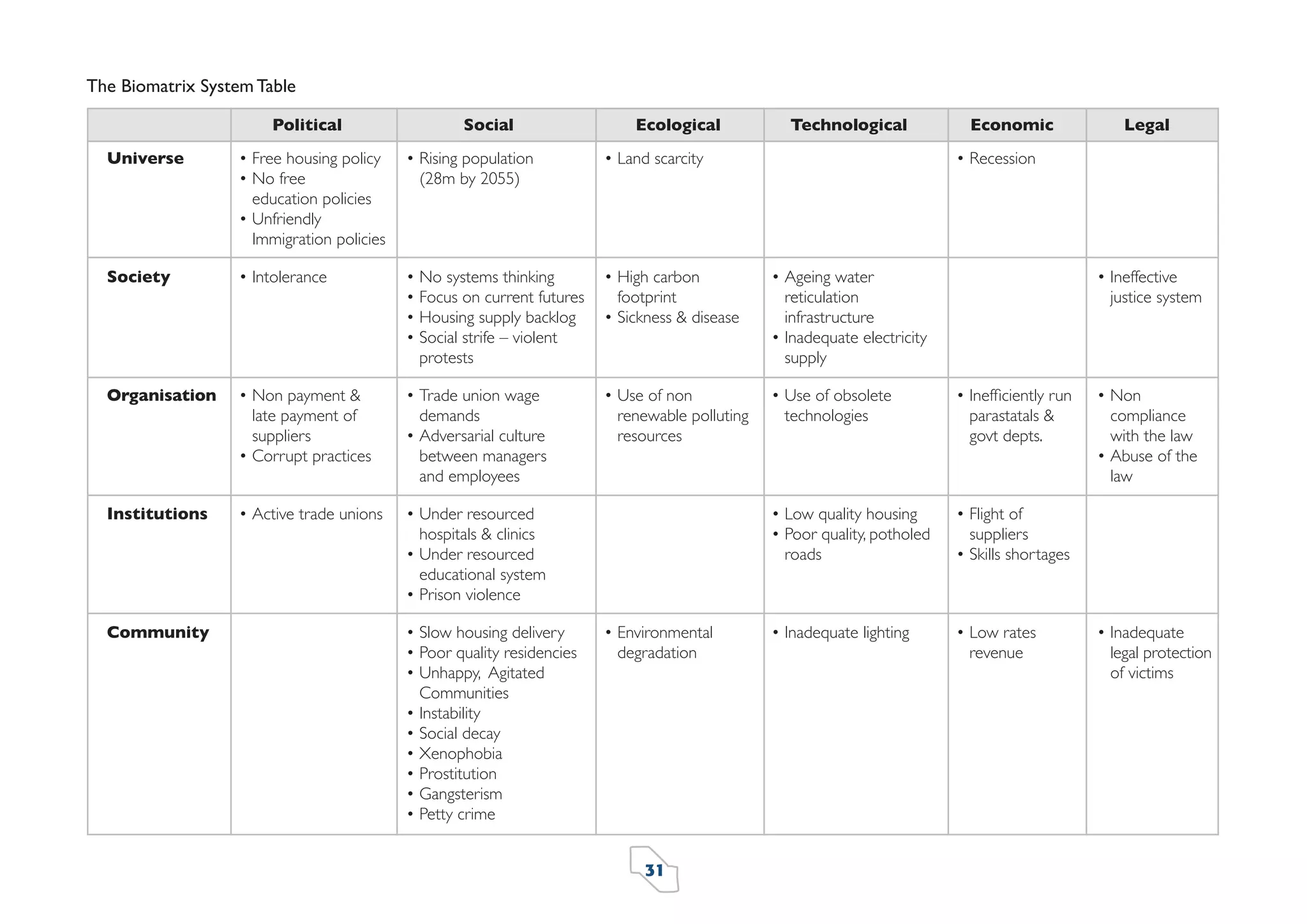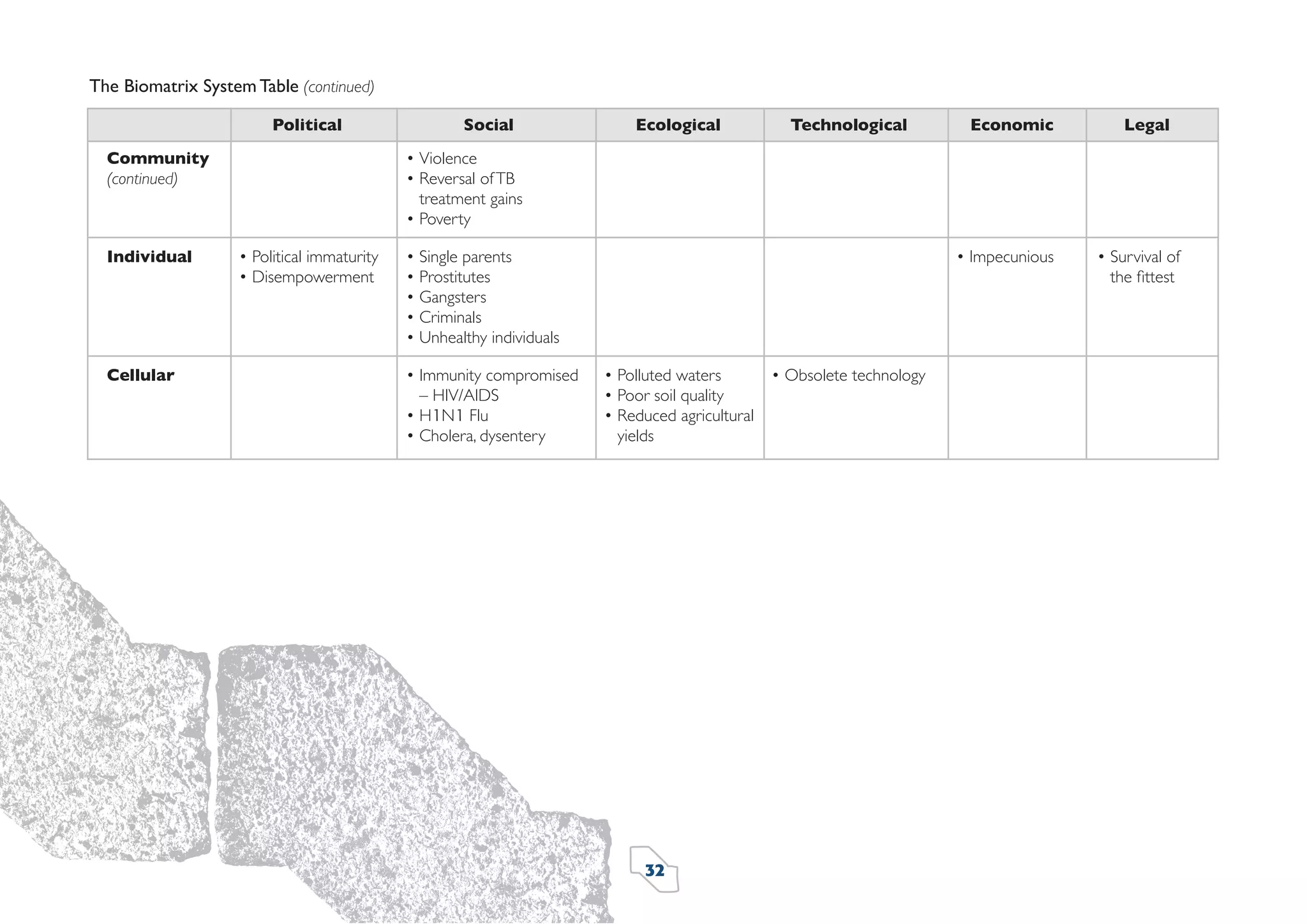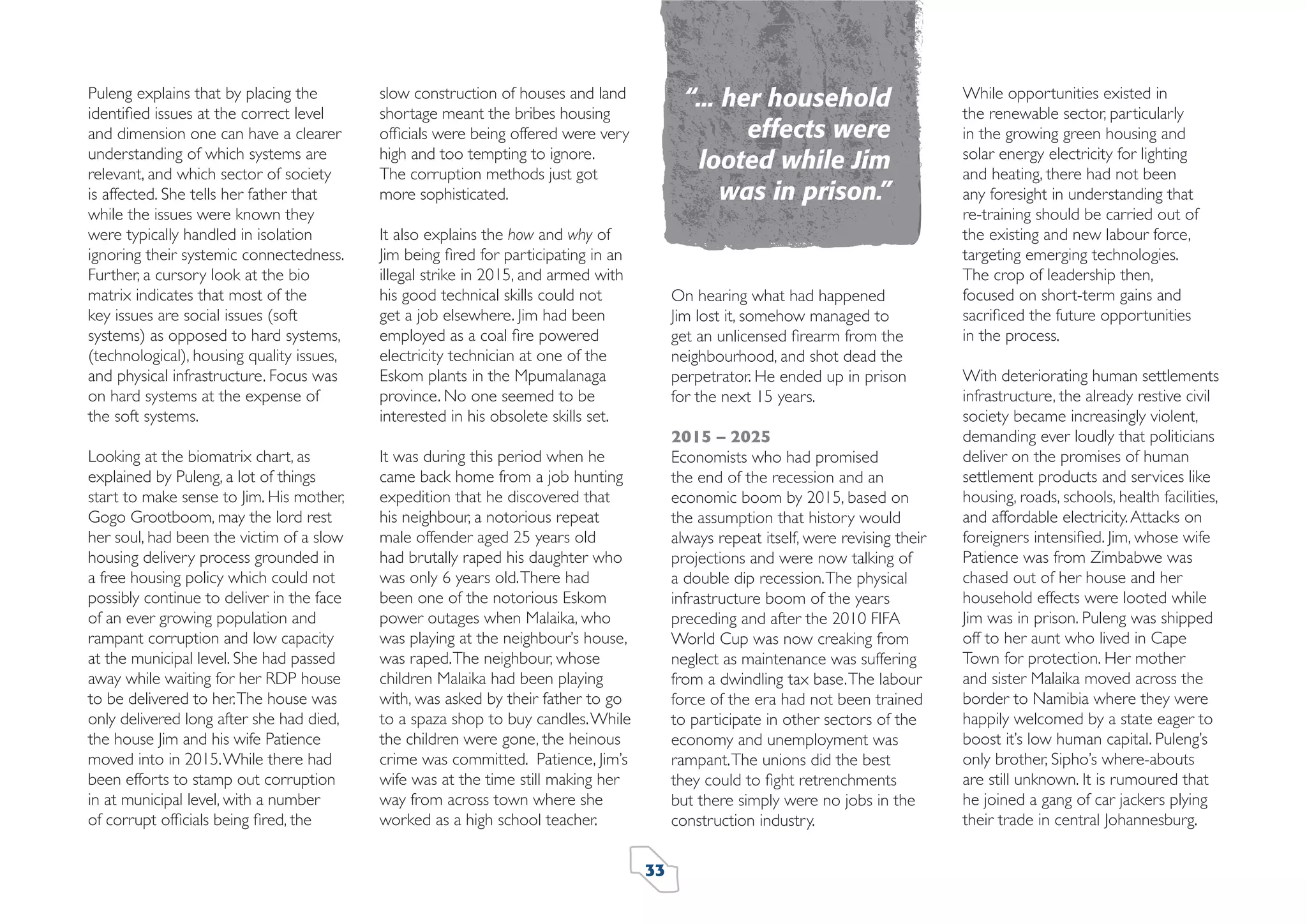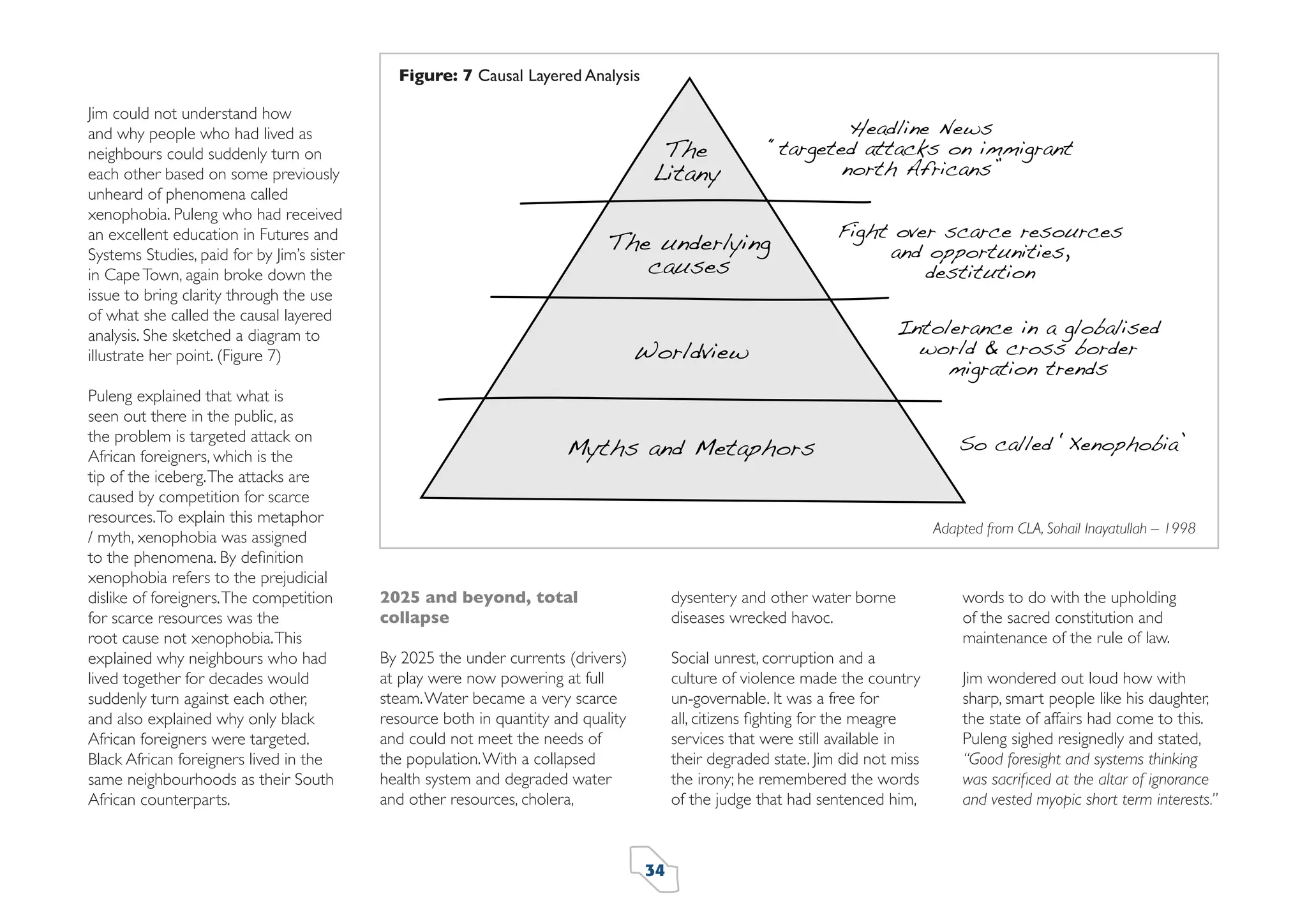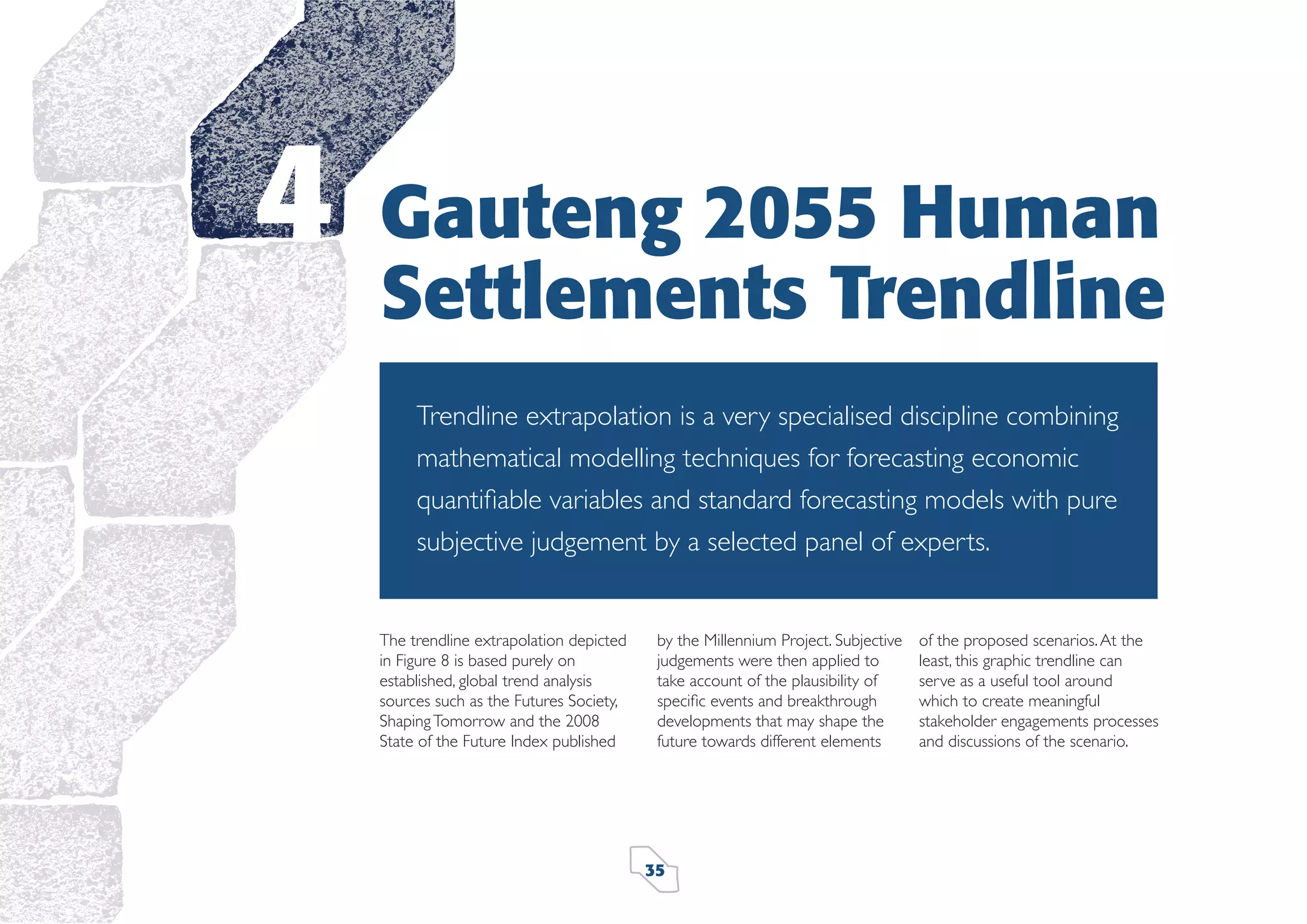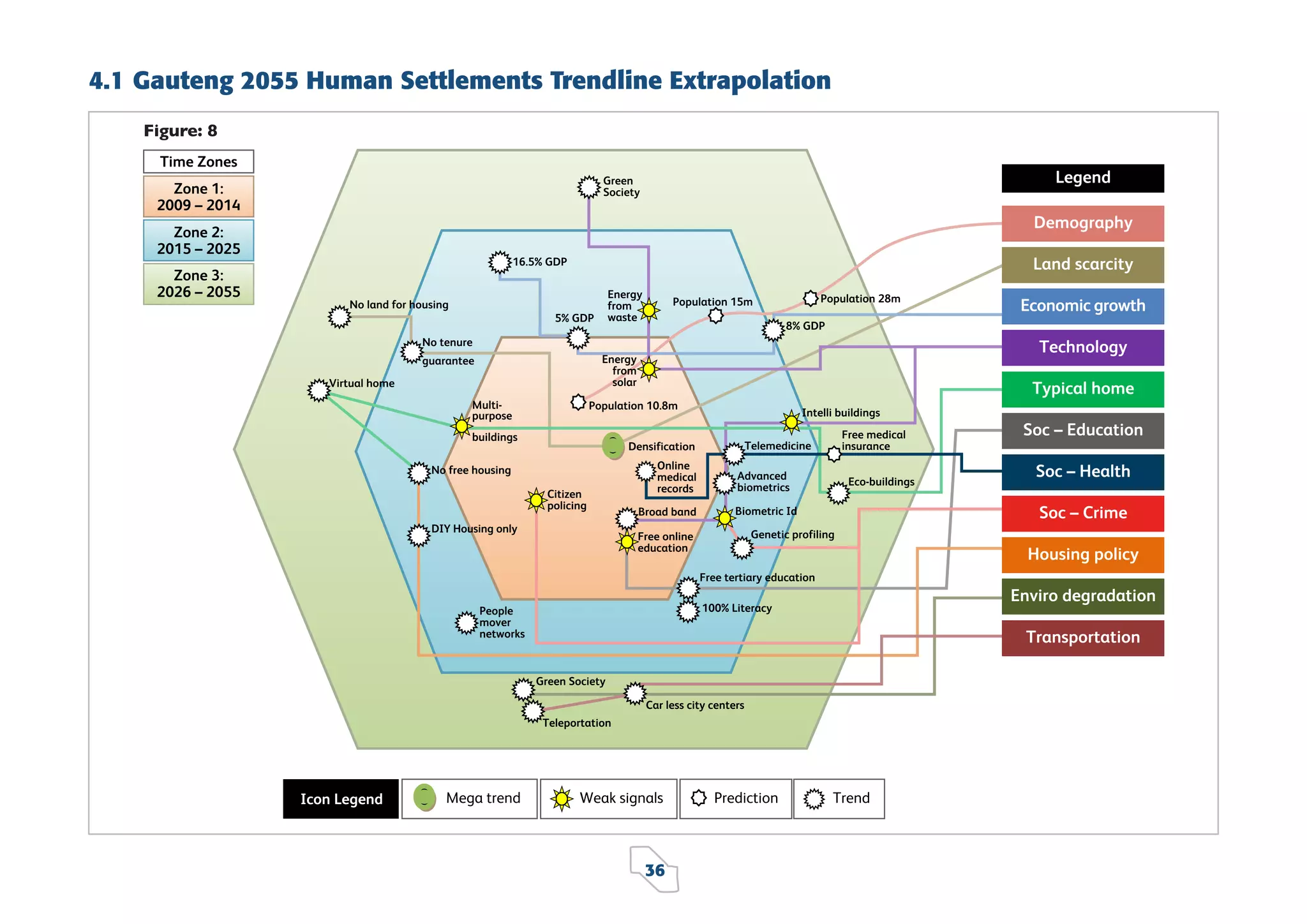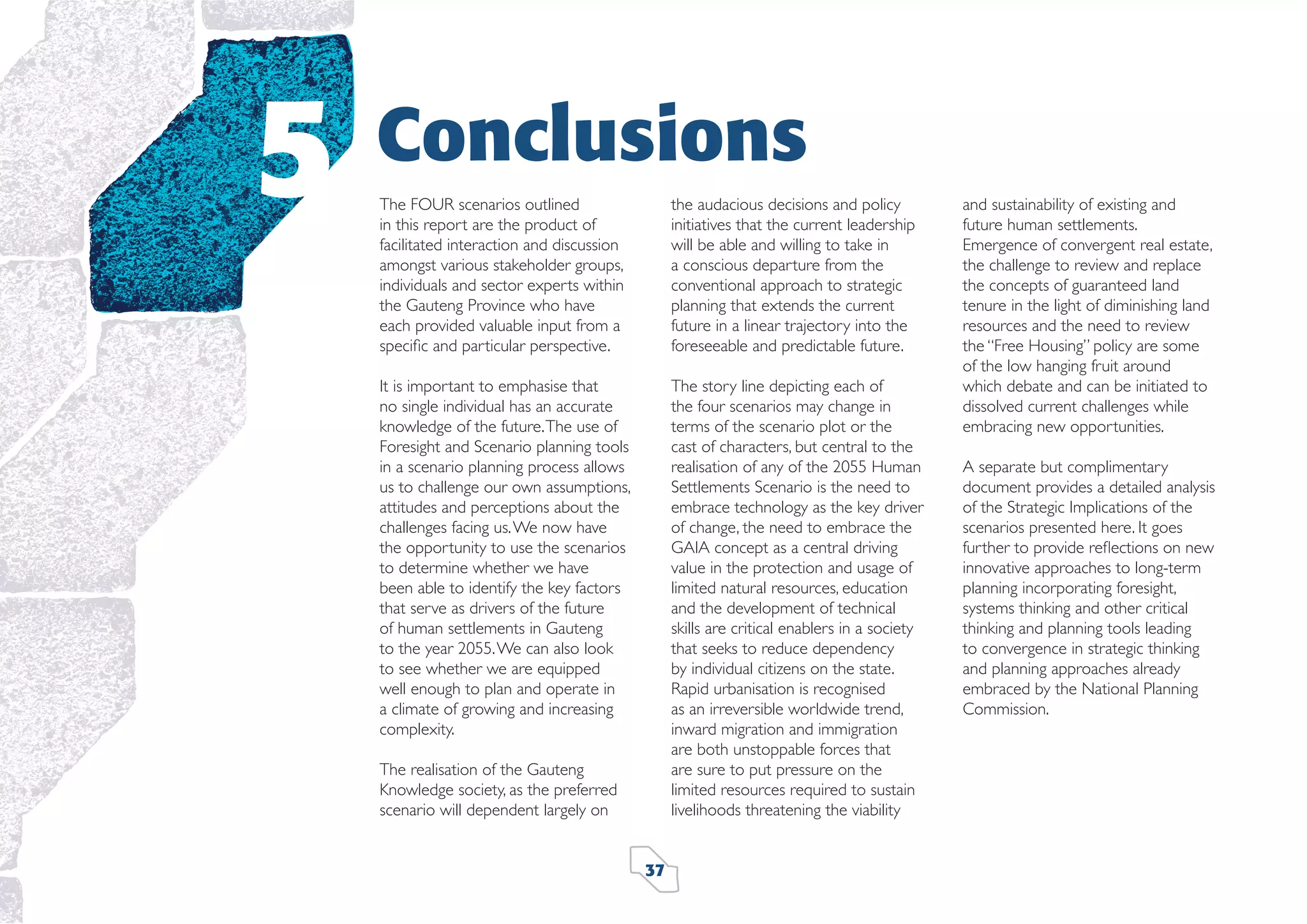The document presents the final report of the Gauteng 2055 Human Settlements Scenario Planning Project, which outlines various plausible future scenarios for human settlements in Gauteng through scenario planning methodologies. It details four key scenarios: 'Gauteng Knowledge Society,' 'Cocoon Global City and Villages,' 'Green Smart Living,' and 'A Dream Deferred,' highlighting critical uncertainties and drivers that will shape the province's future. Emphasizing the importance of strategic interventions, participatory governance, and sustainable practices, the report aims to stimulate strategic conversations about long-term planning for human settlements in Gauteng by 2055.
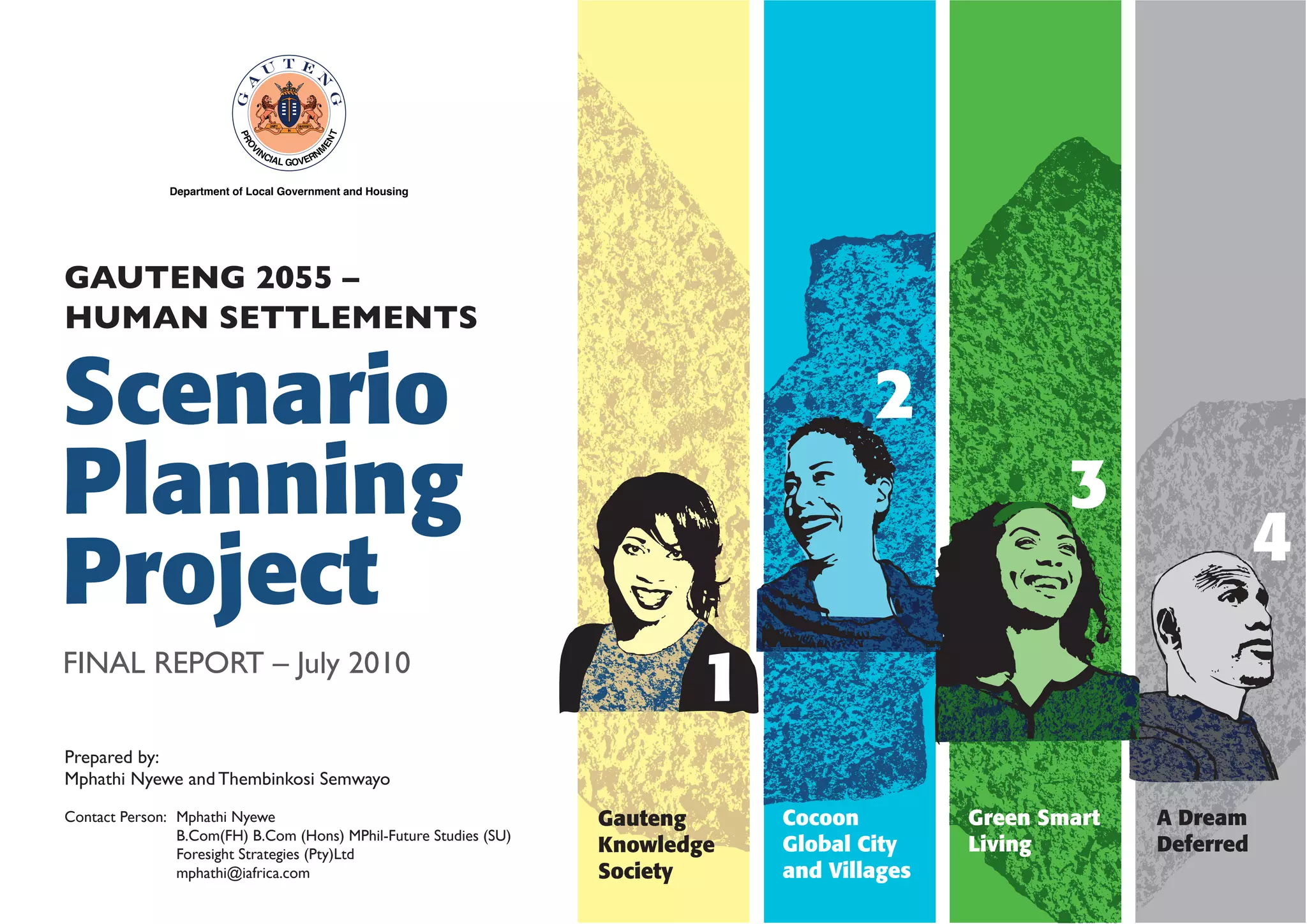
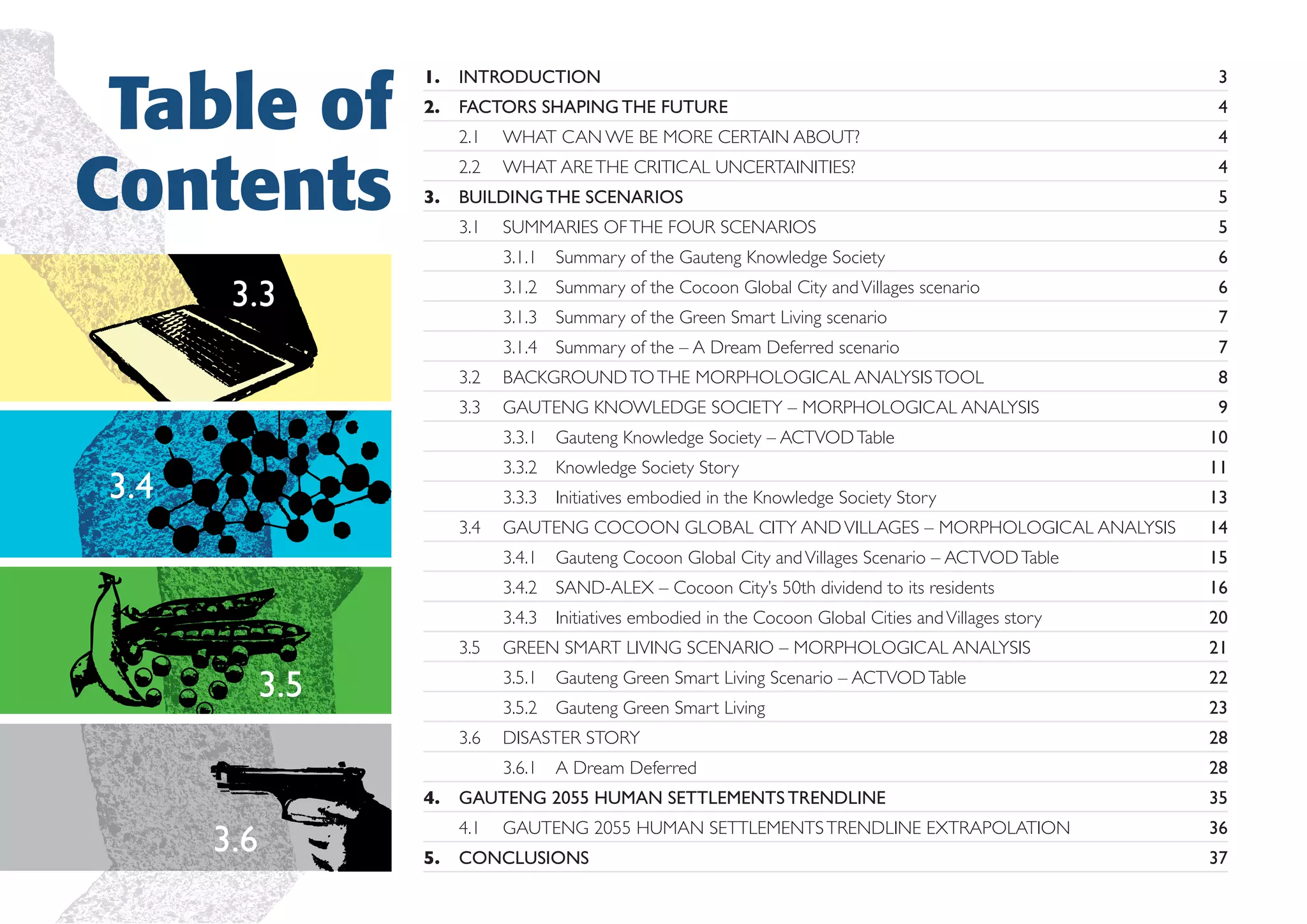
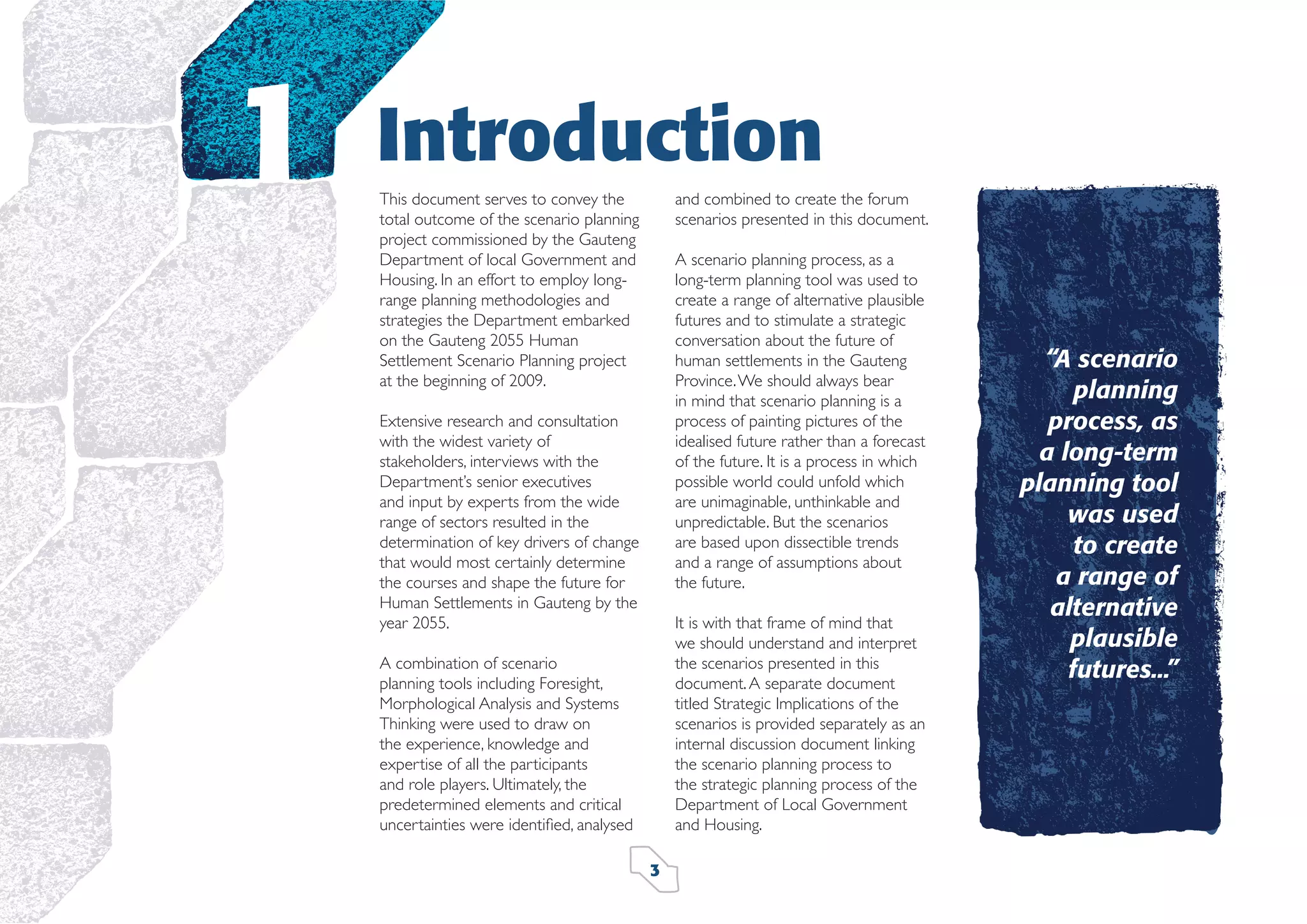
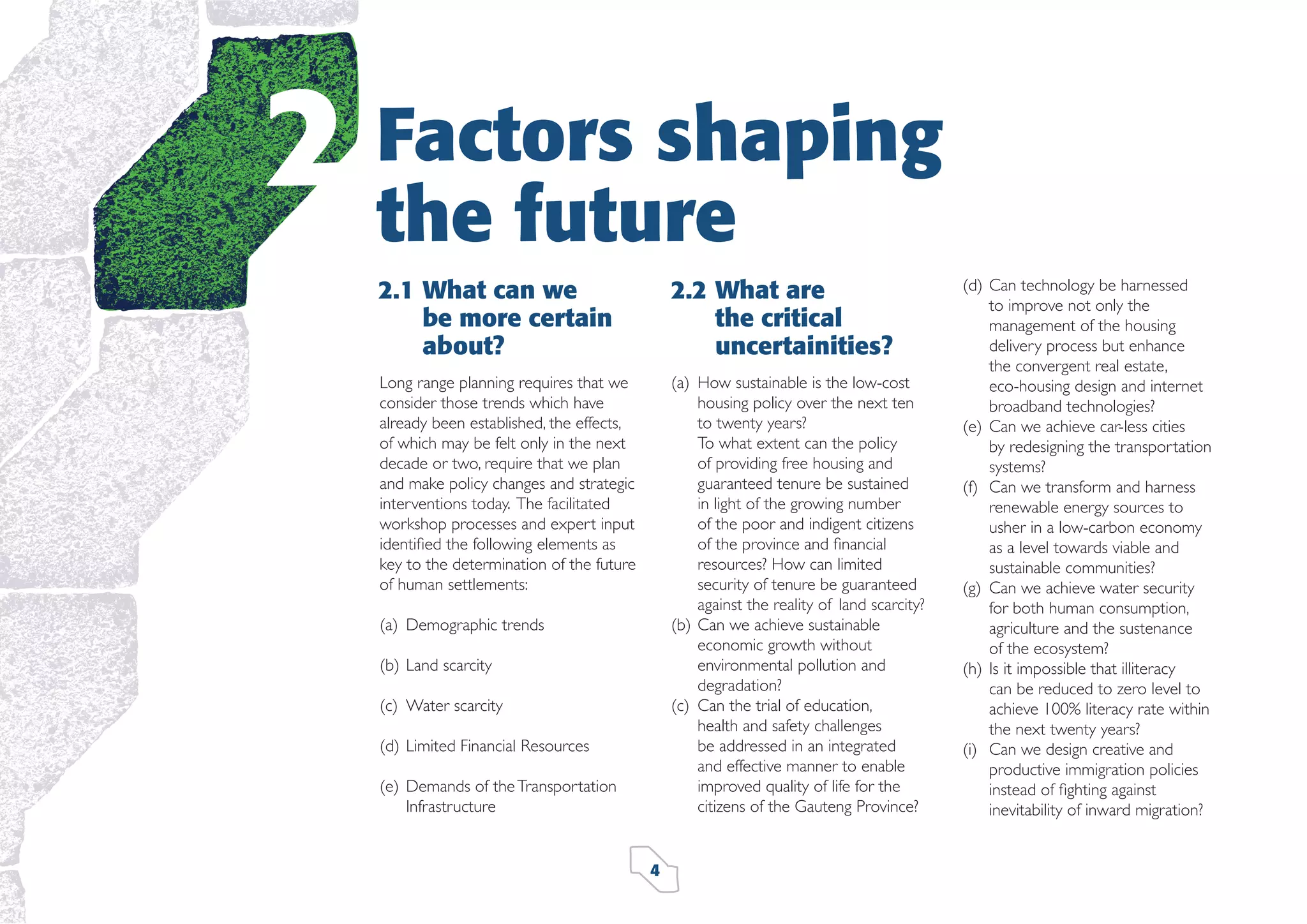

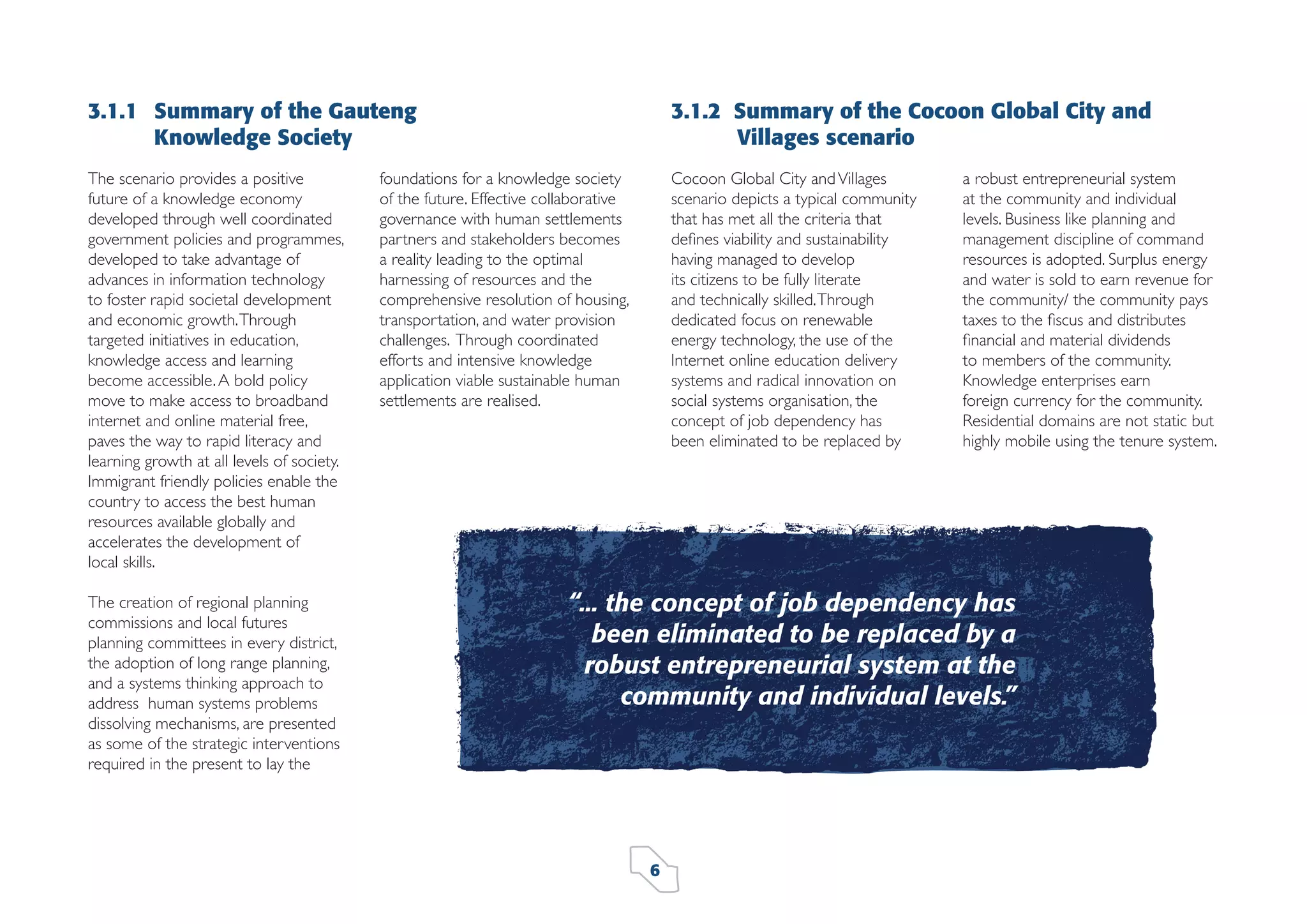
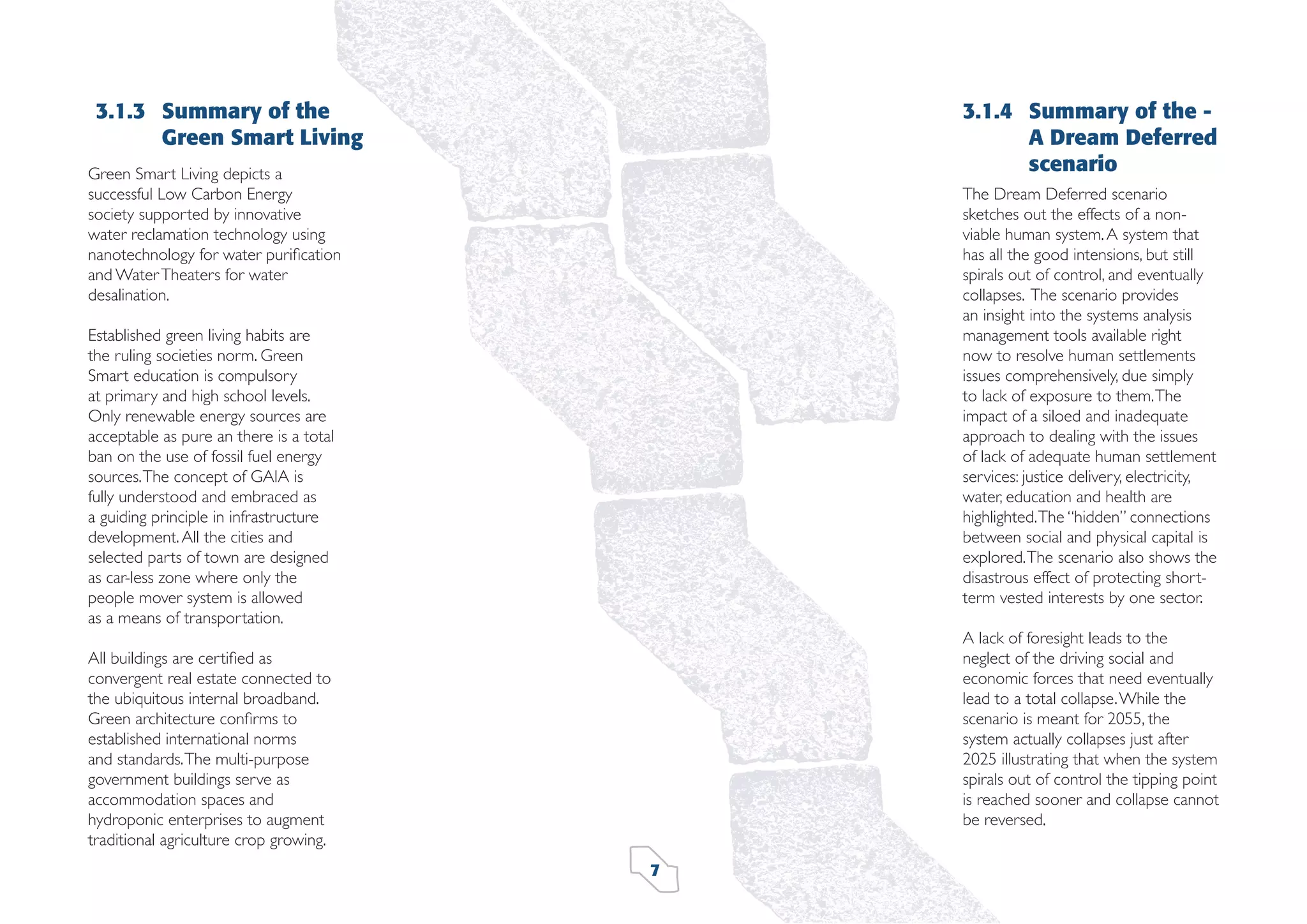
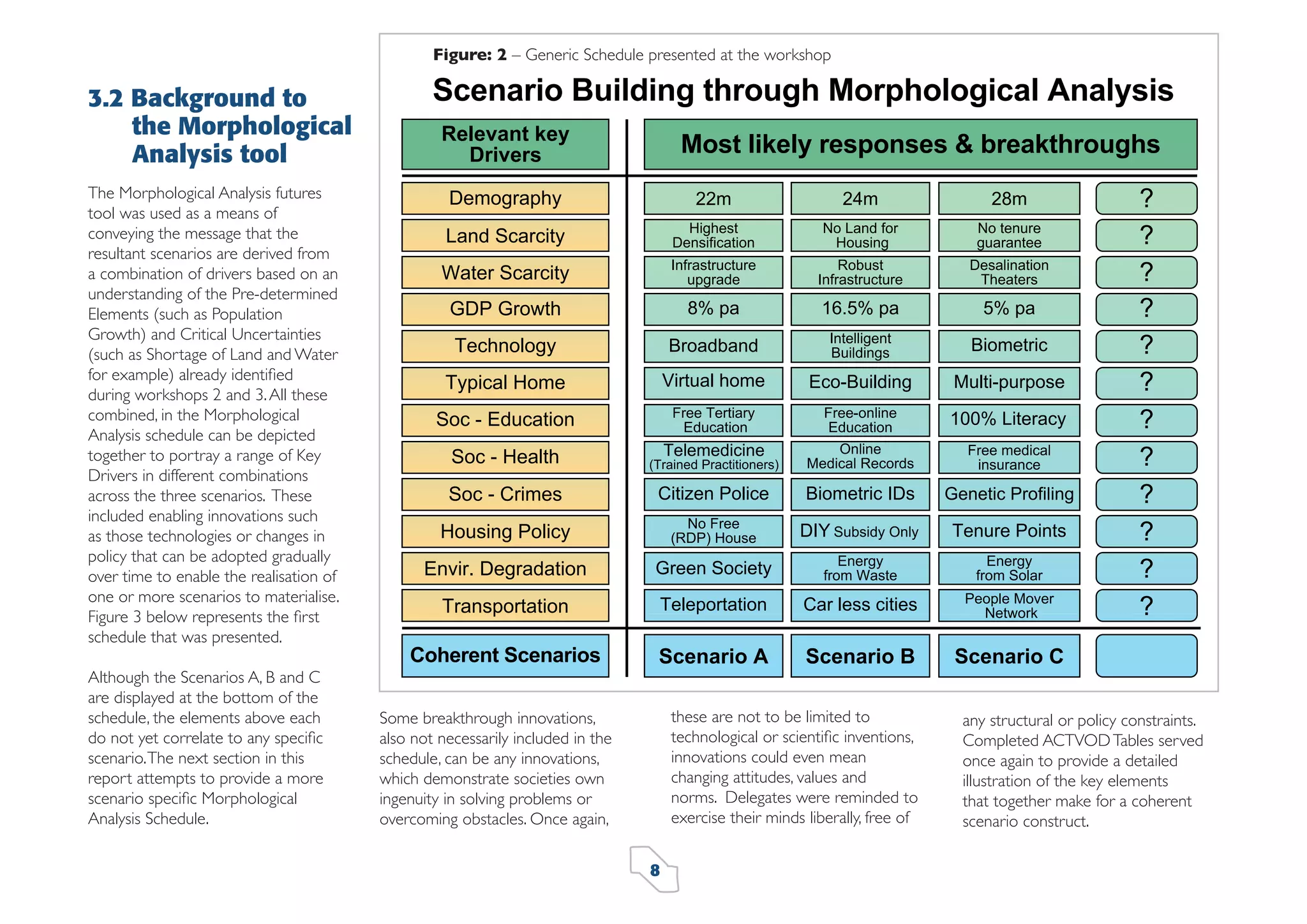
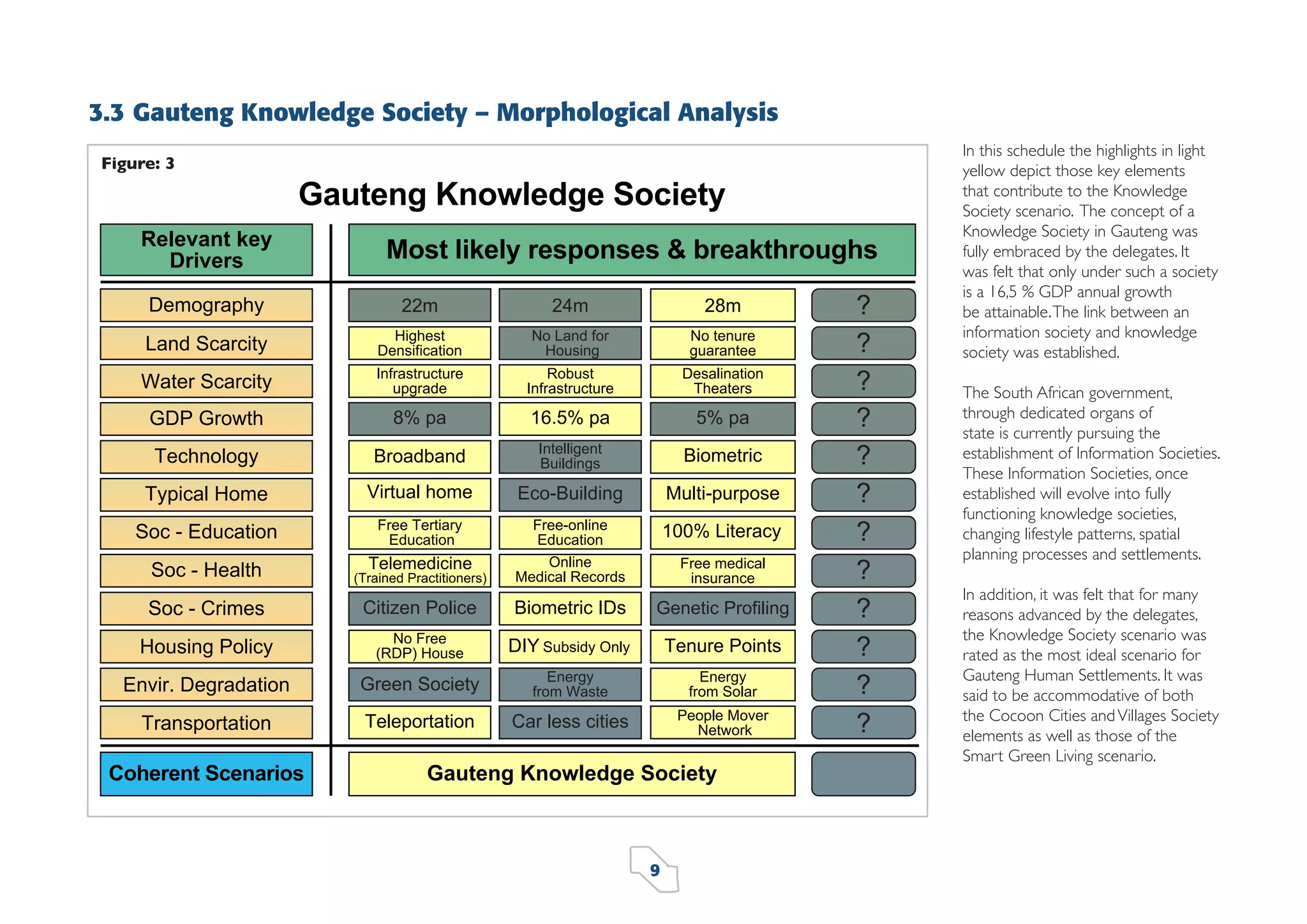
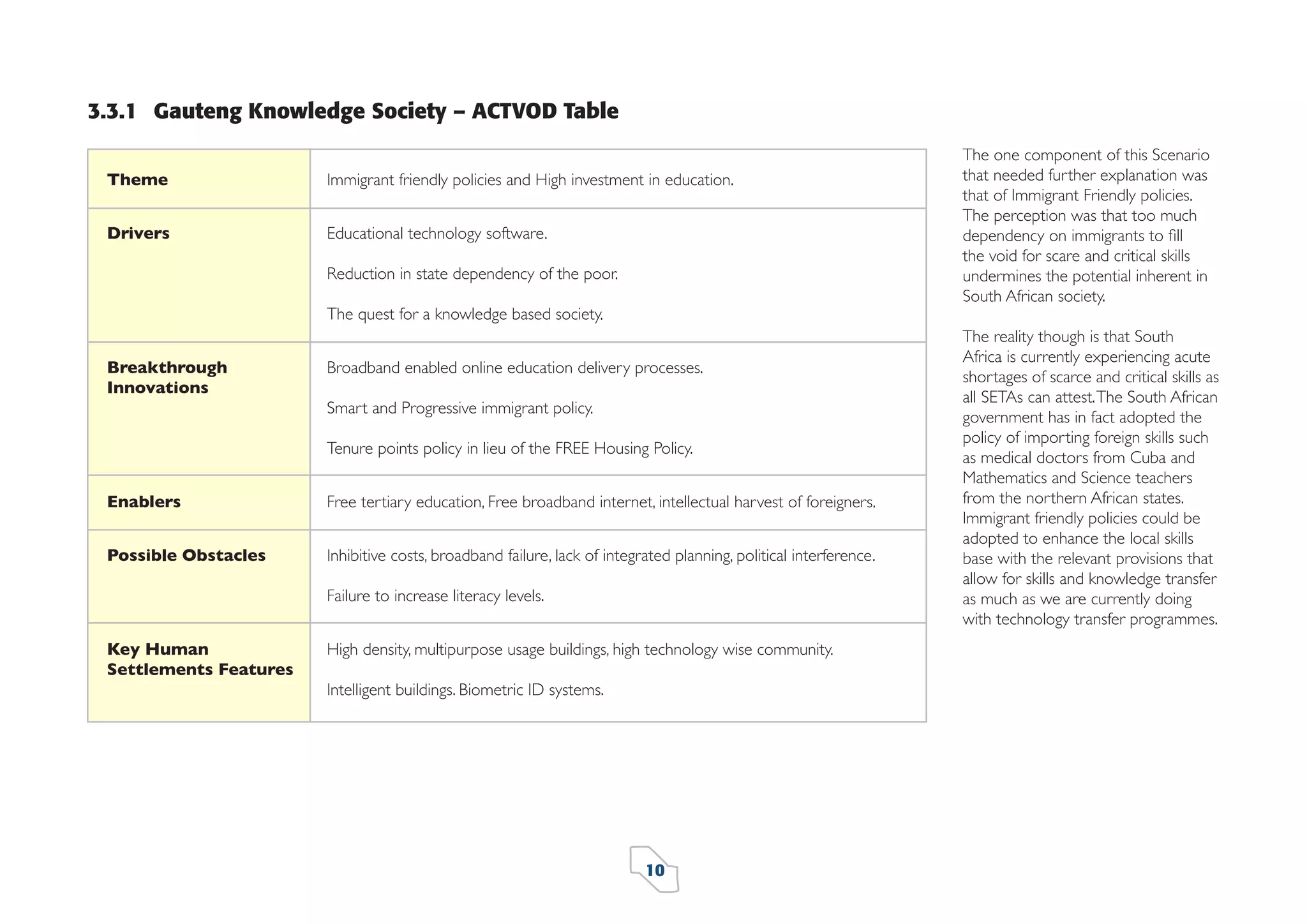

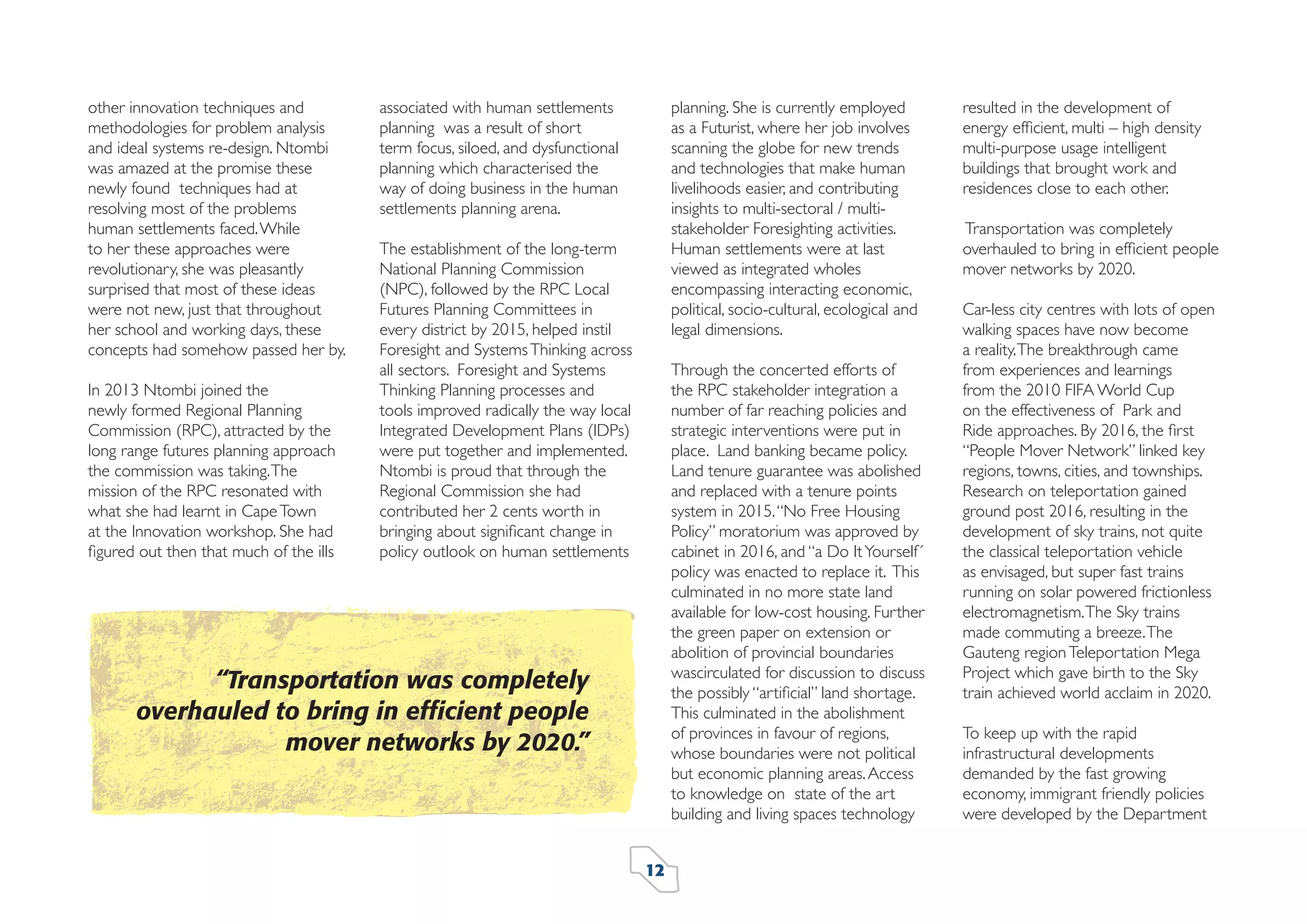
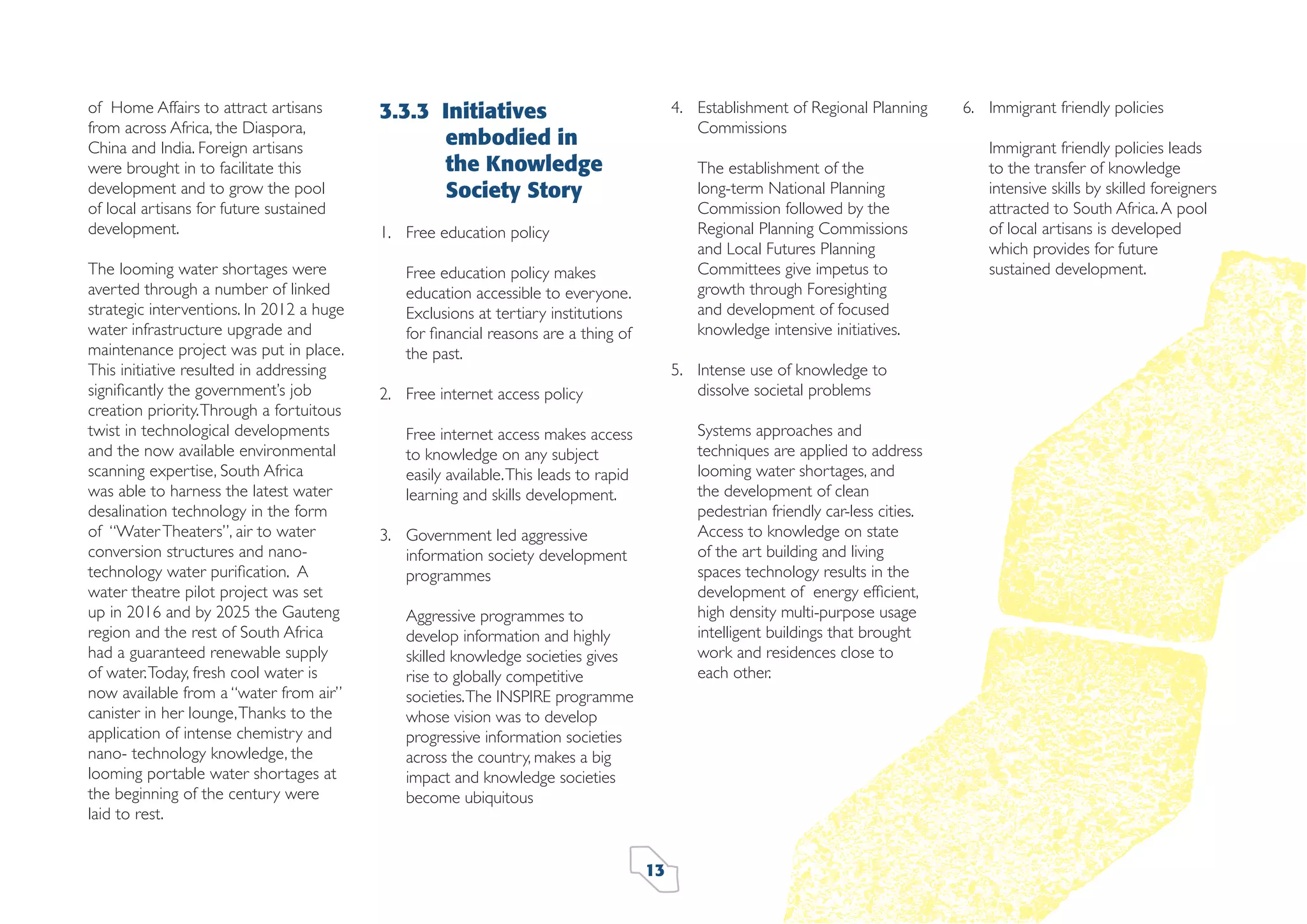
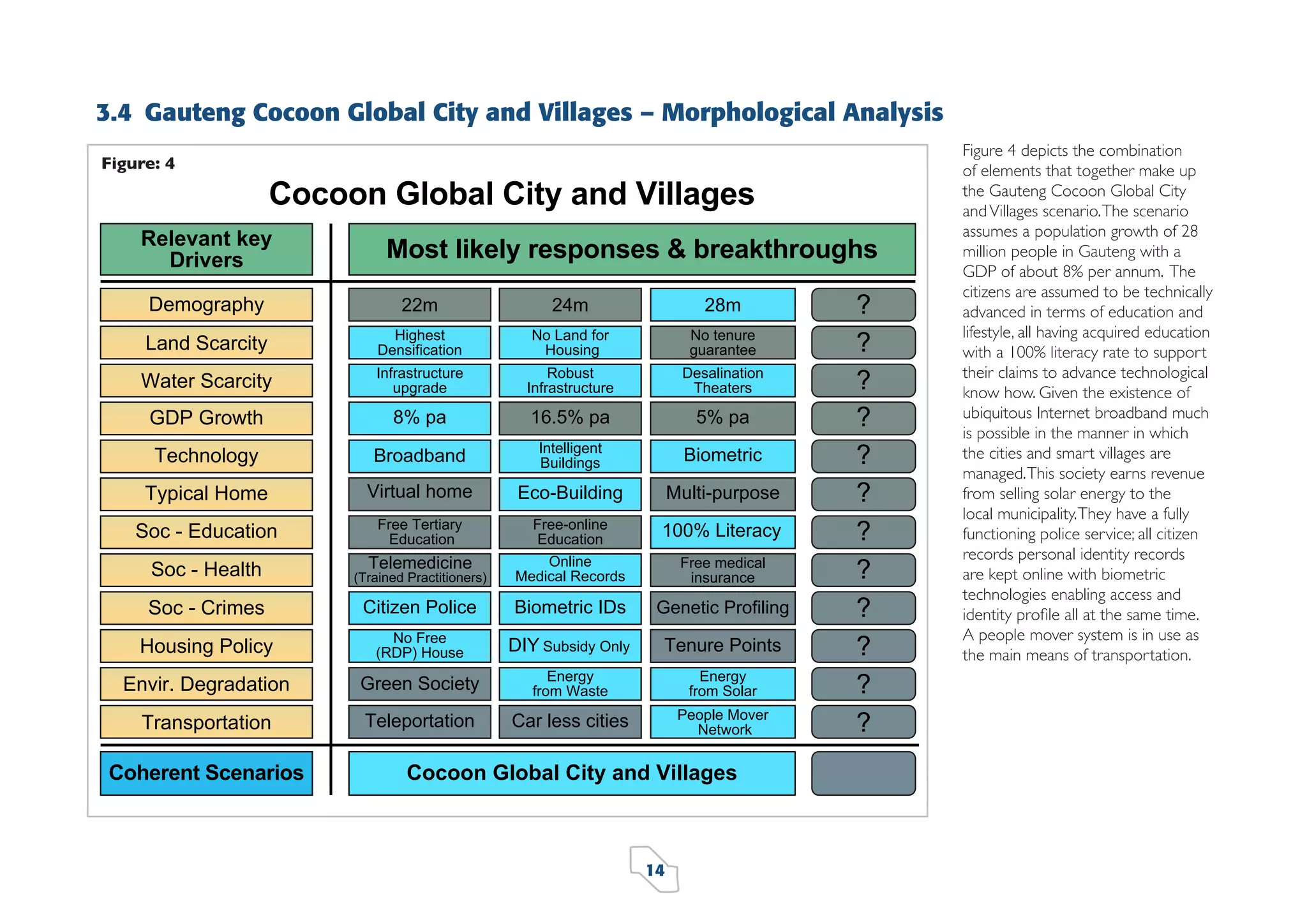
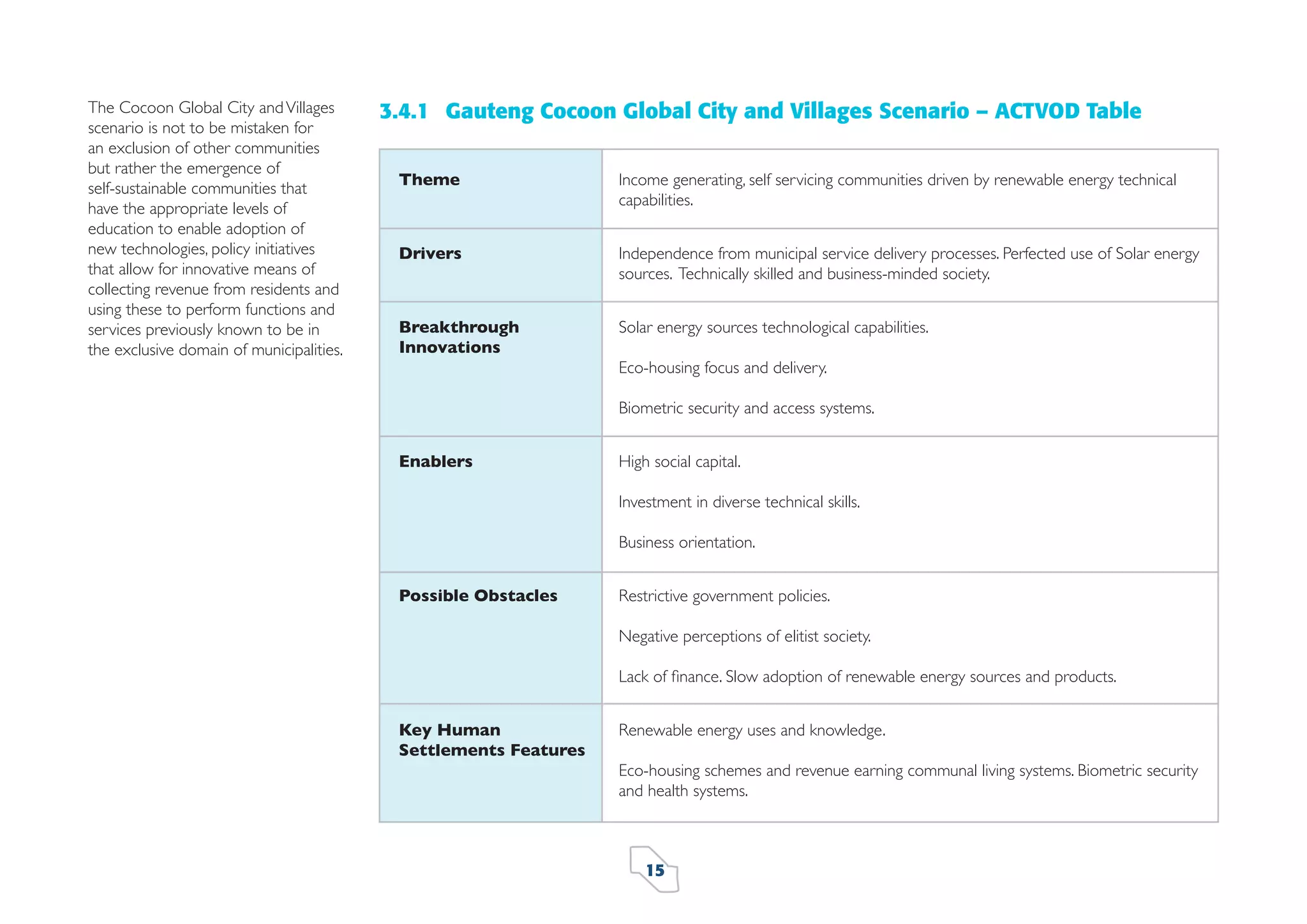
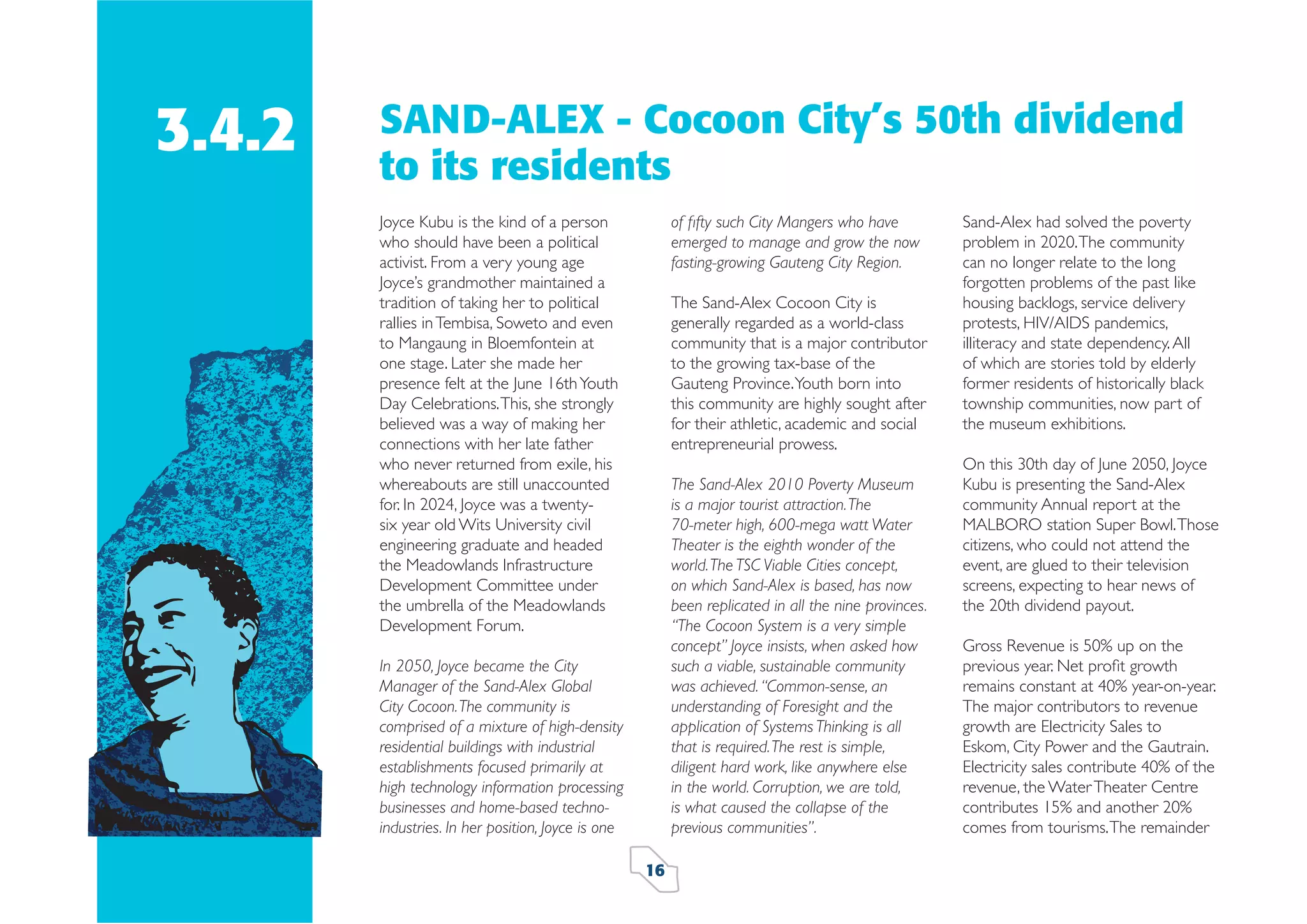
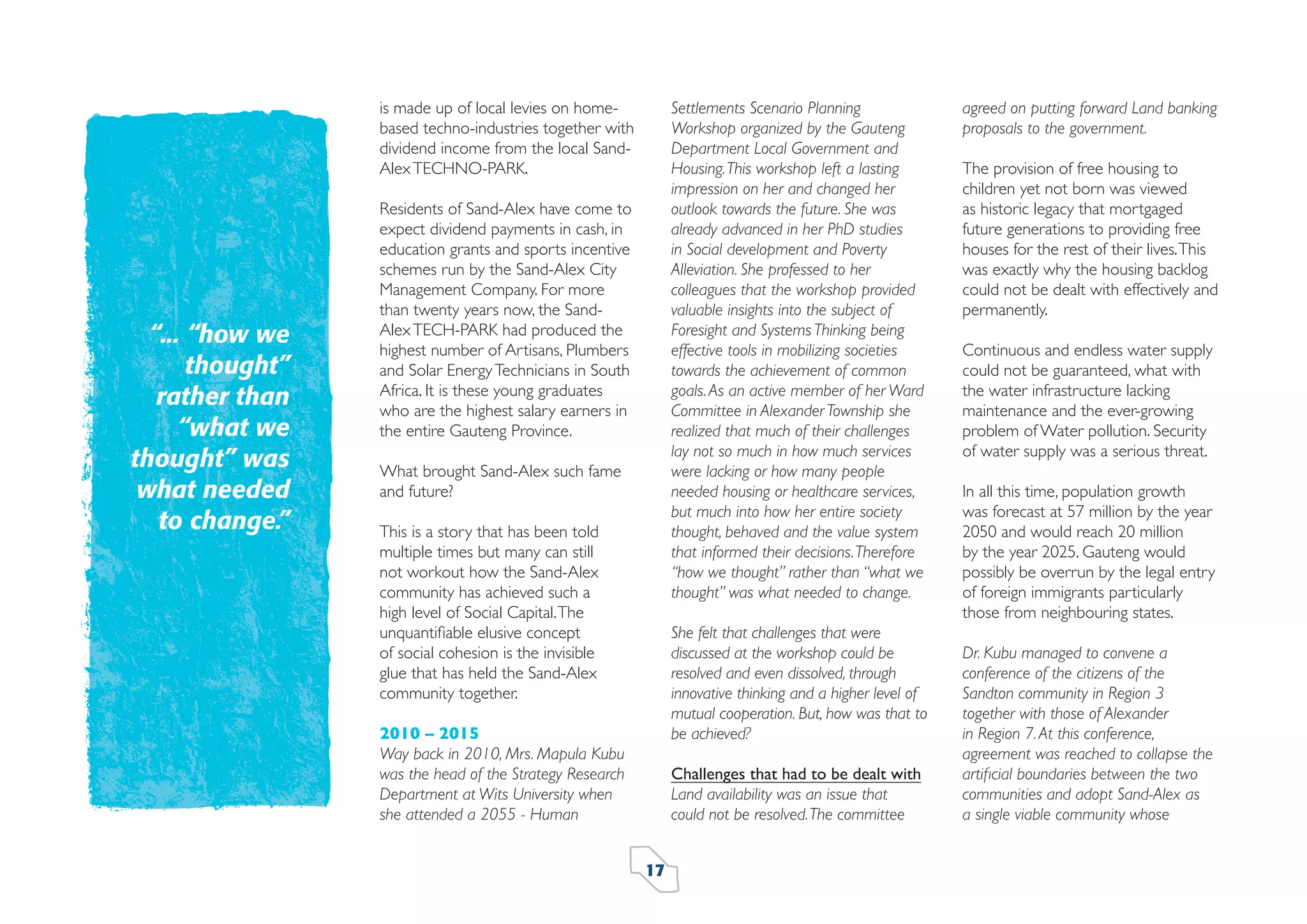

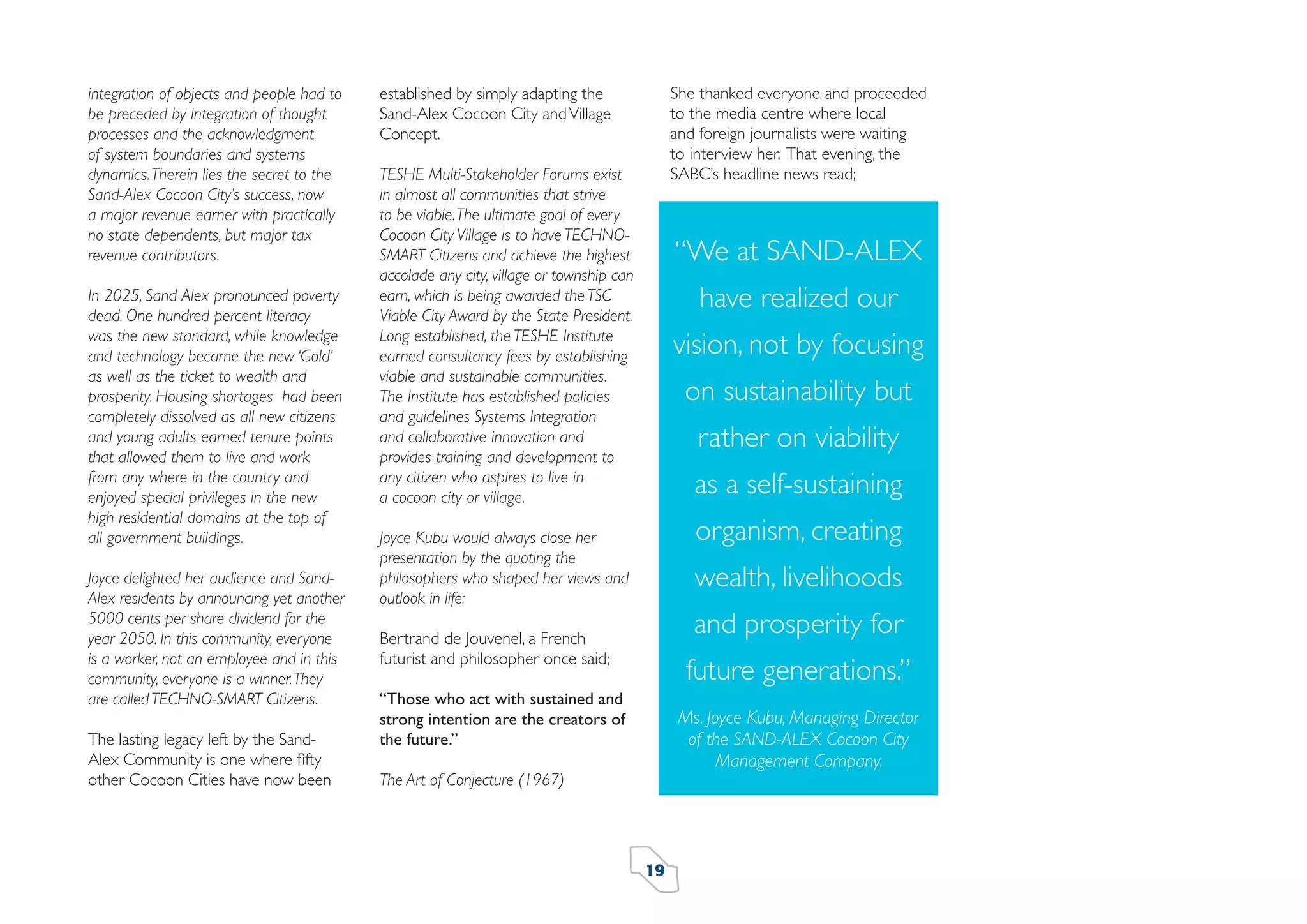
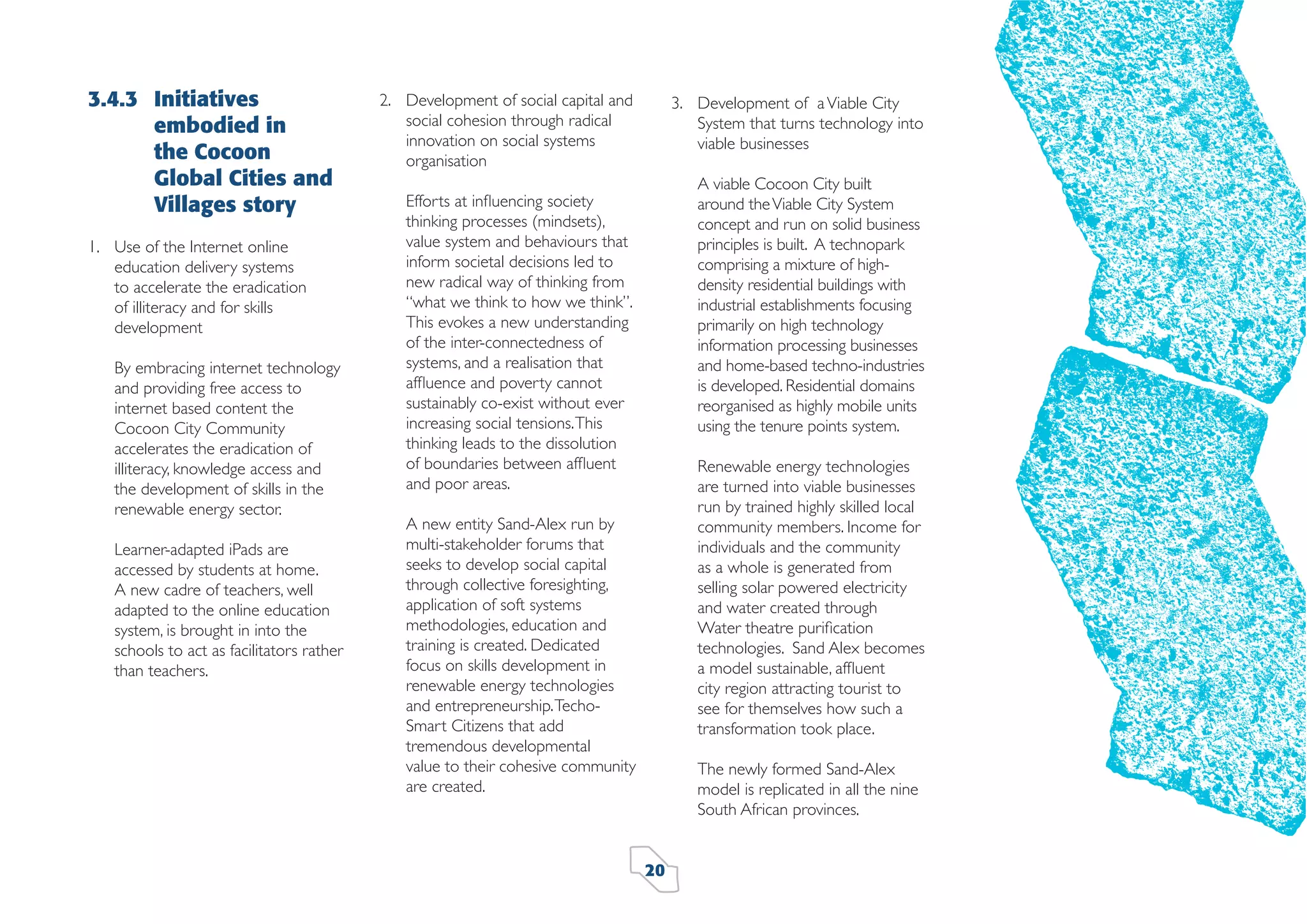
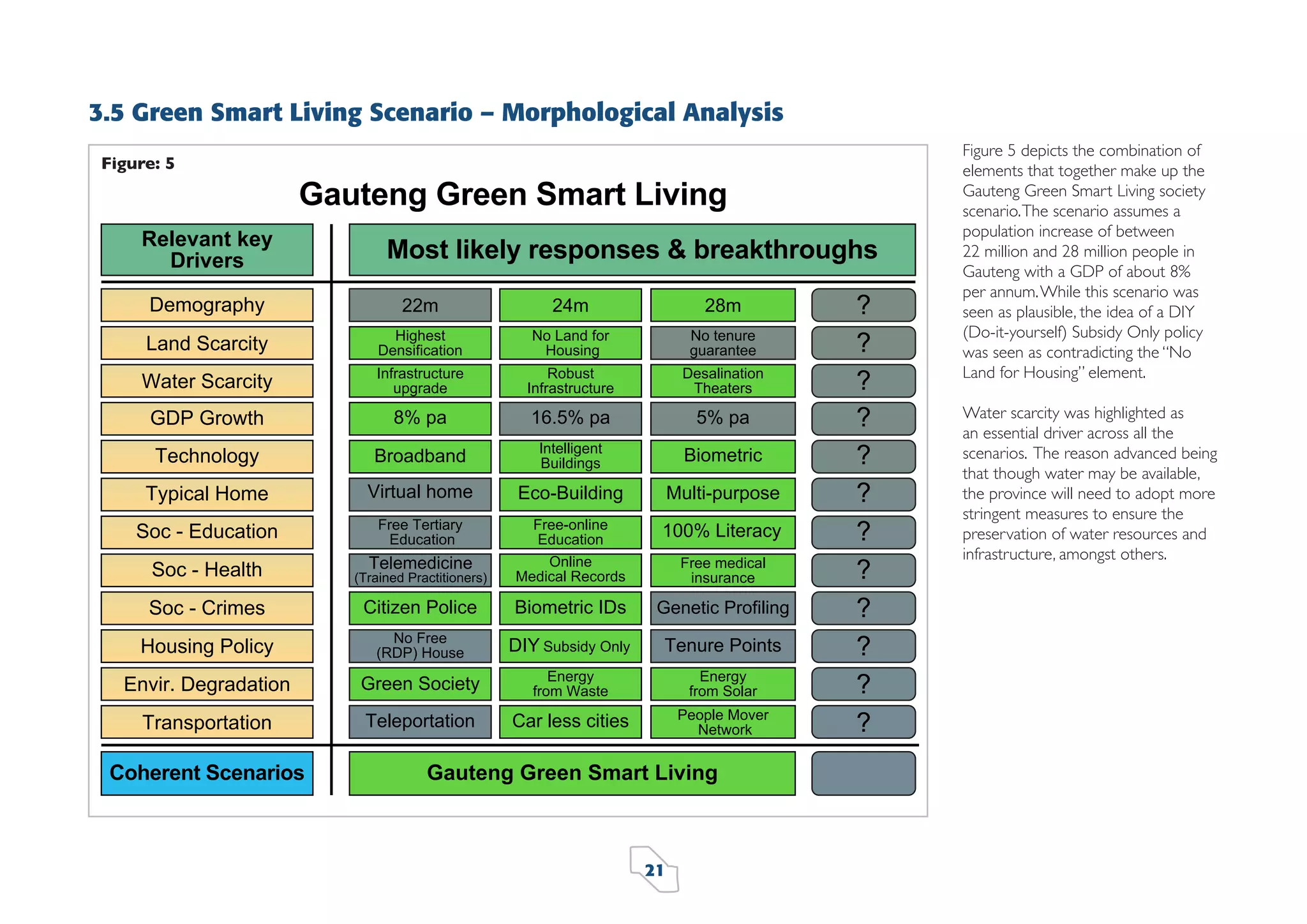
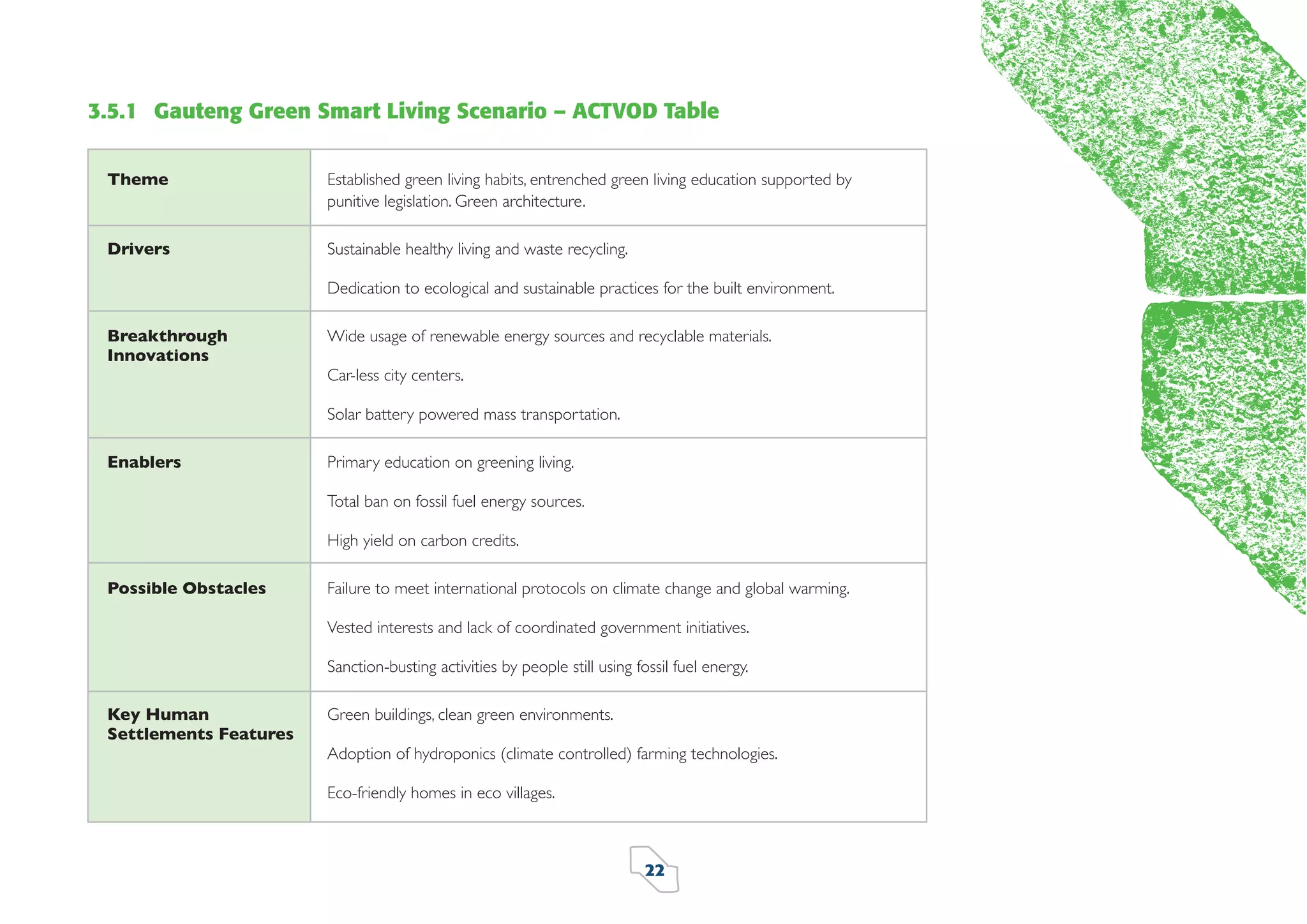

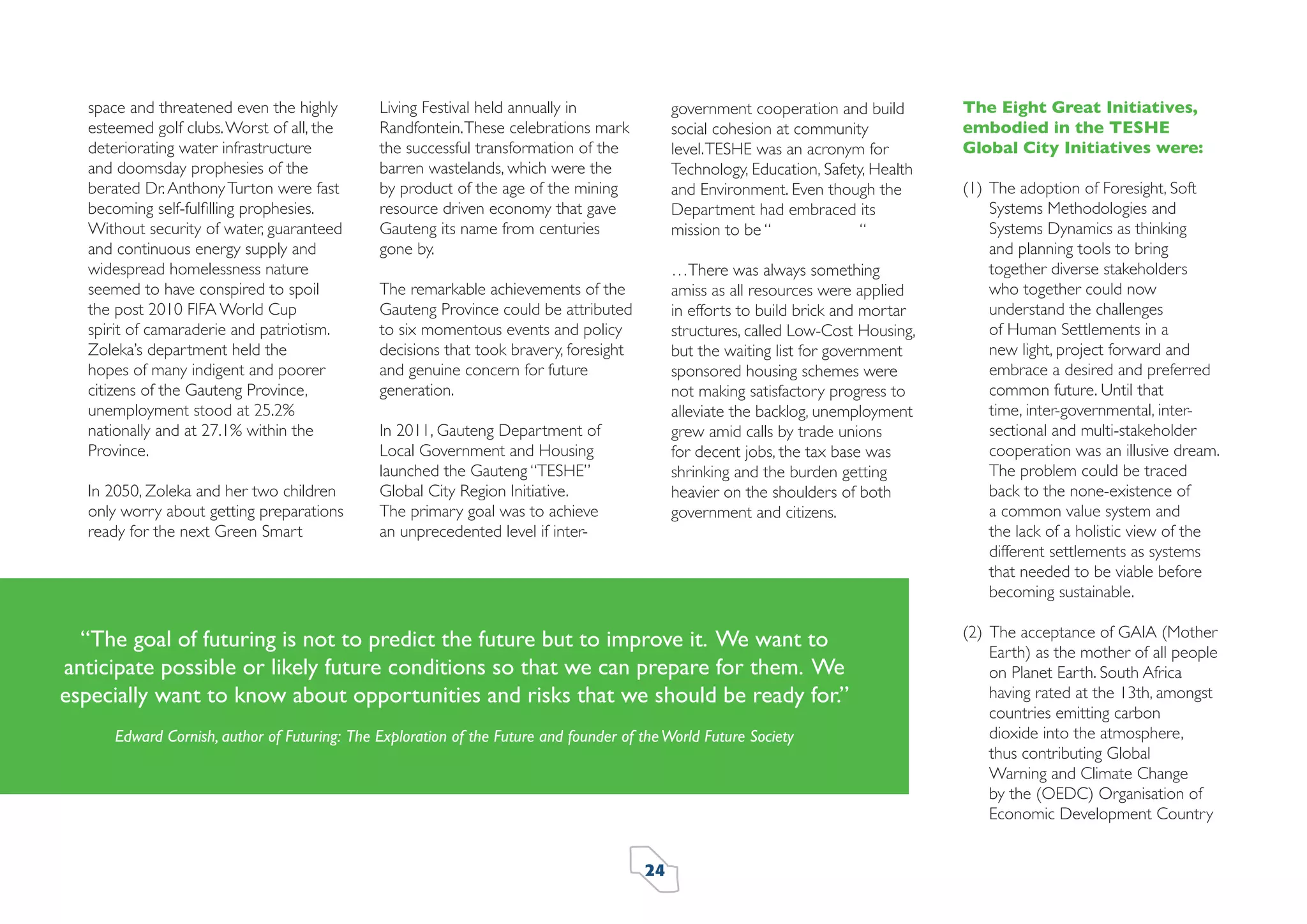
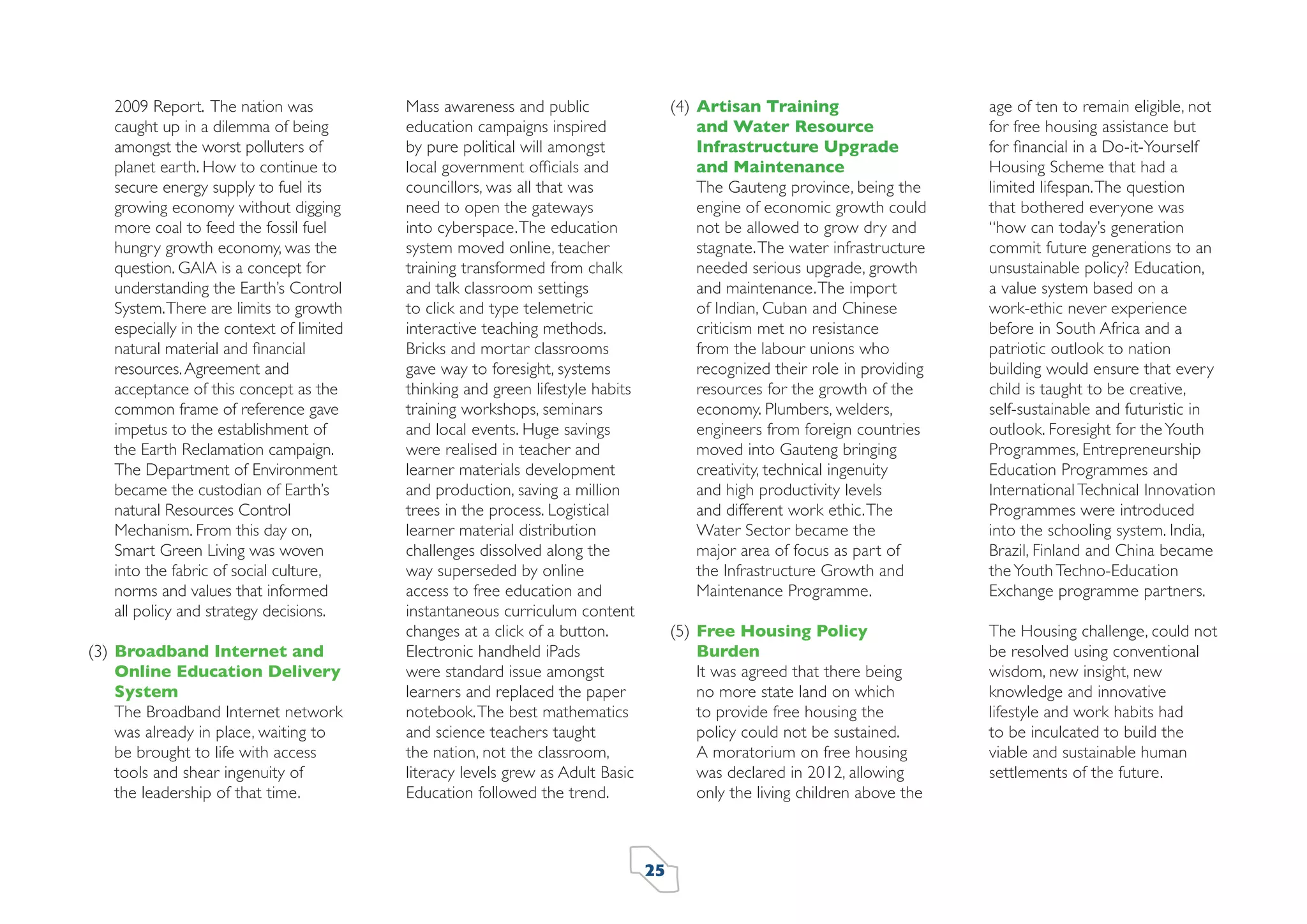
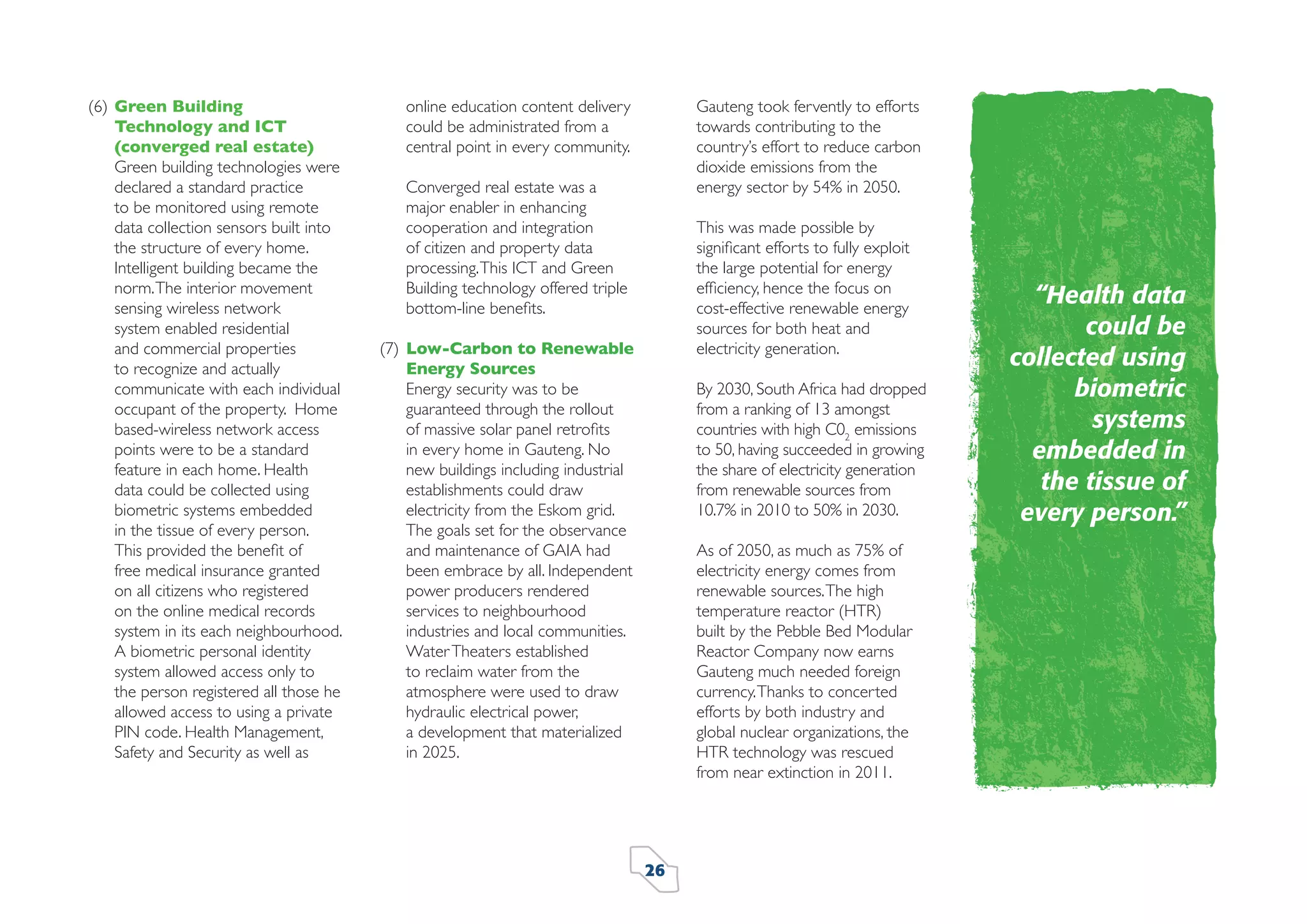

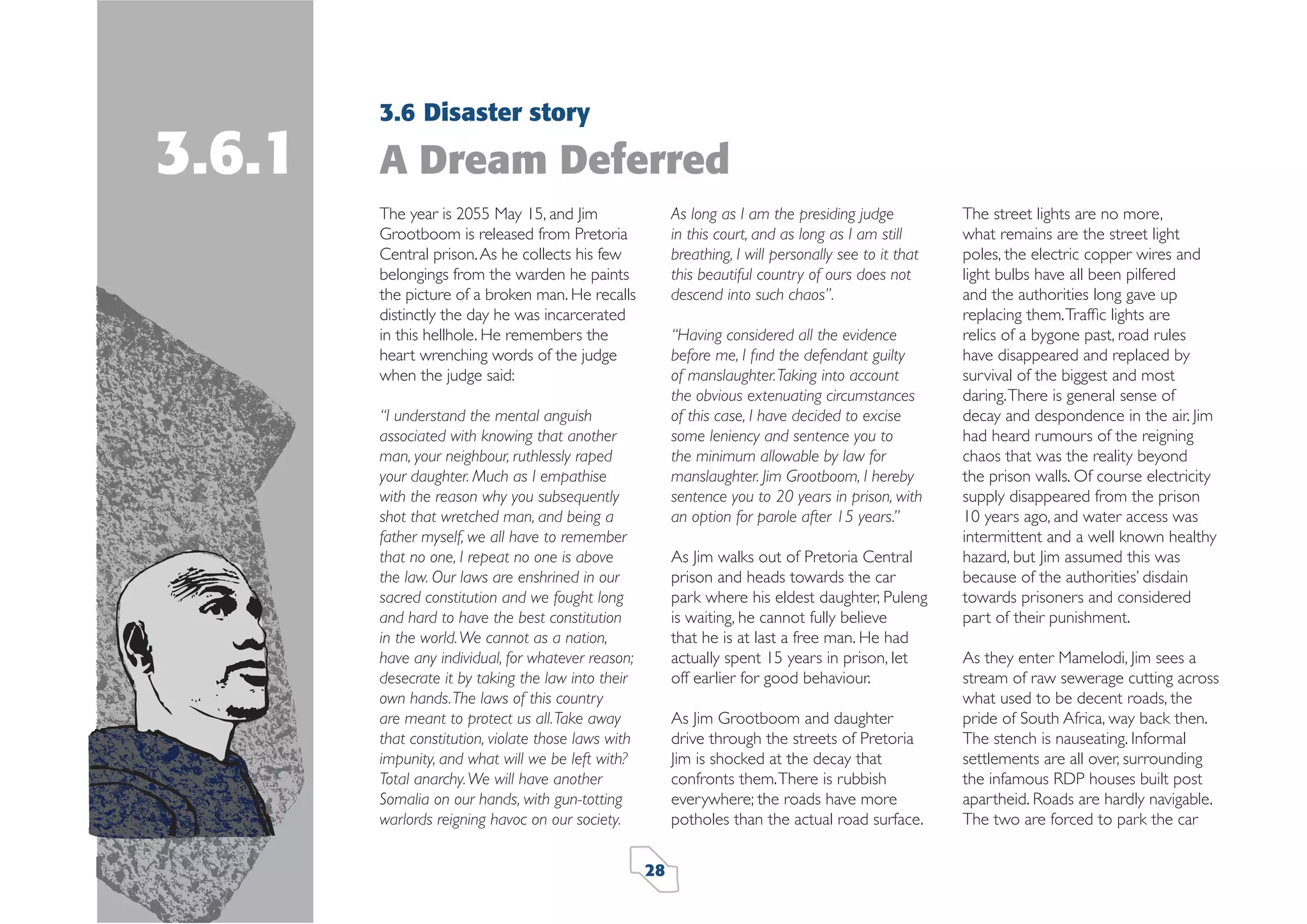
![2kms away from where their house,
once the pride and joy of the family
which Jim got when he was still
working as a technician at Eskom in
2015. Jim had subsequently lost his job
after participating in a so-called “illegal
strike”. How could a strike be “illegal”,
he had protested, when he was
suspended and then retrenched in
2020? Those “blood sucking capitalists”
had conspired with the CCMA to get
rid of him. There was no doubt in his
mind that the corrupt management
had bribed the CCMA officials.
They walked past narrow pathways
strewn by under nourished children
with very little energy to do anything
but sit on stoeps outside their shacks.
Buildings that used to be schools,
community halls, malls, are all standing
The golden age of promise,
2010 - 2015
empty, victims of vandalism. Jim does
not miss the irony of it all. The judge’s
sworn statement to uphold the
constitution and the rule of law and
the total chaos that confronts him
15 years on. He asks his daughter,
“How did we get here?”
This was the golden age of promise
characterised by hope and euphoria.
While civil unrest was evident, and
violent protests were commonplace,
the FIFA world cup had brought in
and left a sense of national pride and
can do attitude. Hadn’t the country
pulled off the hosting of the biggest
world event, and all without a glitch
in the face of global cynics?
Puleng uses the co-causal factor
analysis tool after, [Dorstal 2008]
to illustrate the status quo of the
disastrous under-currents that already
existed in the human settlements
arena in 2010. At this point, she
explains, there were political,
social, and economic drivers of
How did we get here?
Puleng reflects on his father’s question
and comes up with one phrase for an
answer, “Systems failure”. His father is
perplexed, “systems, what systems”,
and Puleng responds, “the interwoven
hard and soft systems that make
up human nature, natural ecological
systems, and man-made artefacts like
roads, electricity and cities”. Puleng
then goes on to fully explain herself
using a number of tools to illustrate
the point.
“... lack of adequate education for individuals in a
community meant limited economic opportunities
for those individuals, ...”
29
change, like growing populations
from immigration, fragmented
planning, slow growing economy,
and civil unrest (see figure 6 for a
comprehensive picture).
Puleng explains that the co-casual
analysis shows that, much as society
tends to look at problems in isolation,
the reality is that problems tend
to co-cause each other and have
feedback loops. For example lack of
adequate education for individuals in
a community meant limited economic
opportunities for those individuals,
which in turn caused increased
poverty. This in turn increased the
demand for free housing, and less
human settlement infrastructure
investment like schools, hospitals
and so forth.](https://image.slidesharecdn.com/gauteng2055-scenarioplanningprojectreport28thnov2012-131116083126-phpapp02/75/Gauteng-2055-Human-Settlements-Scenario-Planning-Project-Report-by-Mphathi-Nyewe-29-2048.jpg)

